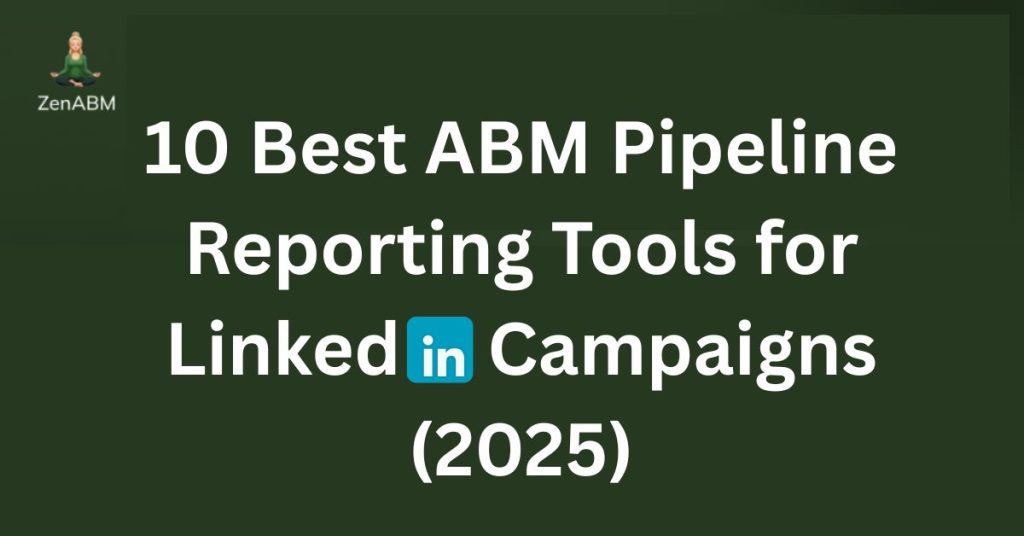To run ABM with confidence, you need account-centric reporting that links ad exposure (yes, down to impressions) and engagement to pipeline, opportunity stage movement, and closed-won revenue.
If you want to defend budget and dial in delivery, you need a platform built for LinkedIn and ABM, not a generic analytics toy. This guide ranks the best ABM pipeline reporting tools for LinkedIn campaigns with a bias toward view-through truth, tight CRM alignment, and board-ready reporting.
Strap in.
10 Best ABM pipeline reporting tools for LinkedIn campaigns (2025): Tabulated Summary
| Tool | Company + Campaign-Level Impression Tracking | Two-Way CRM Integration | First-Party LinkedIn API Data | Pricing | Summary |
|---|---|---|---|---|---|
| ZenABM | ✅ | ✅ (native, bi-directional) | ✅ (via LinkedIn API) | $59–$119/mo | Purpose-built for LinkedIn ABM: clean campaign-by-company metrics, instant HubSpot sync, clear deal matching, and fast time-to-pipeline. |
| Factors.ai | ✅ | ❌ (pulls data, no native push) | ✅ (via LinkedIn API) | $399–Custom | Solid impression controls and AdPilot. Lacks native property write-back for CRM-level pipeline reporting. |
| Demandbase | ✅ | ✅ (multi-CRM, bi-directional) | ✅ (via LinkedIn API) | Custom | Enterprise ABM suite with deep controls and revenue reporting. Powerful—and priced like it. |
| Terminus | ⚠️ (only for Matched Audiences) | ✅ (bi-directional) | ✅ (limited to matched audiences) | Custom | Good Salesforce fit and account views; impression analytics are constrained to Matched Audiences. |
| HockeyStack | ✅ | ❌ (only pull; native workflow building needed) | ✅ (via LinkedIn API) | Custom | Rich journeys and account paths. One-way CRM sync means extra work to make pipeline dashboards sing. |
| LeadsRx | ❌ (cookie-dependent) | ❌ (custom setup needed) | ❌ | Custom | Omni-channel attribution engine. No official LinkedIn account analytics for impressions—weak for ABM pipeline needs. |
| 6Sense | ❌ | ✅ | ❌ | Custom | Excellent prediction and segmentation; lacks impression-first, account-level LinkedIn reporting for pipeline proof. |
| HubSpot Attribution | ❌ | ✅ (internal) | ❌ | $800–$3600/mo | Great for click and contact attribution inside HubSpot; not designed for impression-led ABM pipeline tracking. |
| CommonRoom | ❌ (tracks engagement only) | ✅ | ❌ (different LinkedIn API for contacts, not impressions) | $999–Custom | Community signals + LinkedIn engagement. Useful intel, but not a replacement for impression-level pipeline reporting. |
| Windsor.ai | ❌ | ❌ (manual account grouping) | ❌ | $19–$499+ | Great data hub and model playground. Not for LinkedIn ABM impression or pipeline-by-account analytics. |
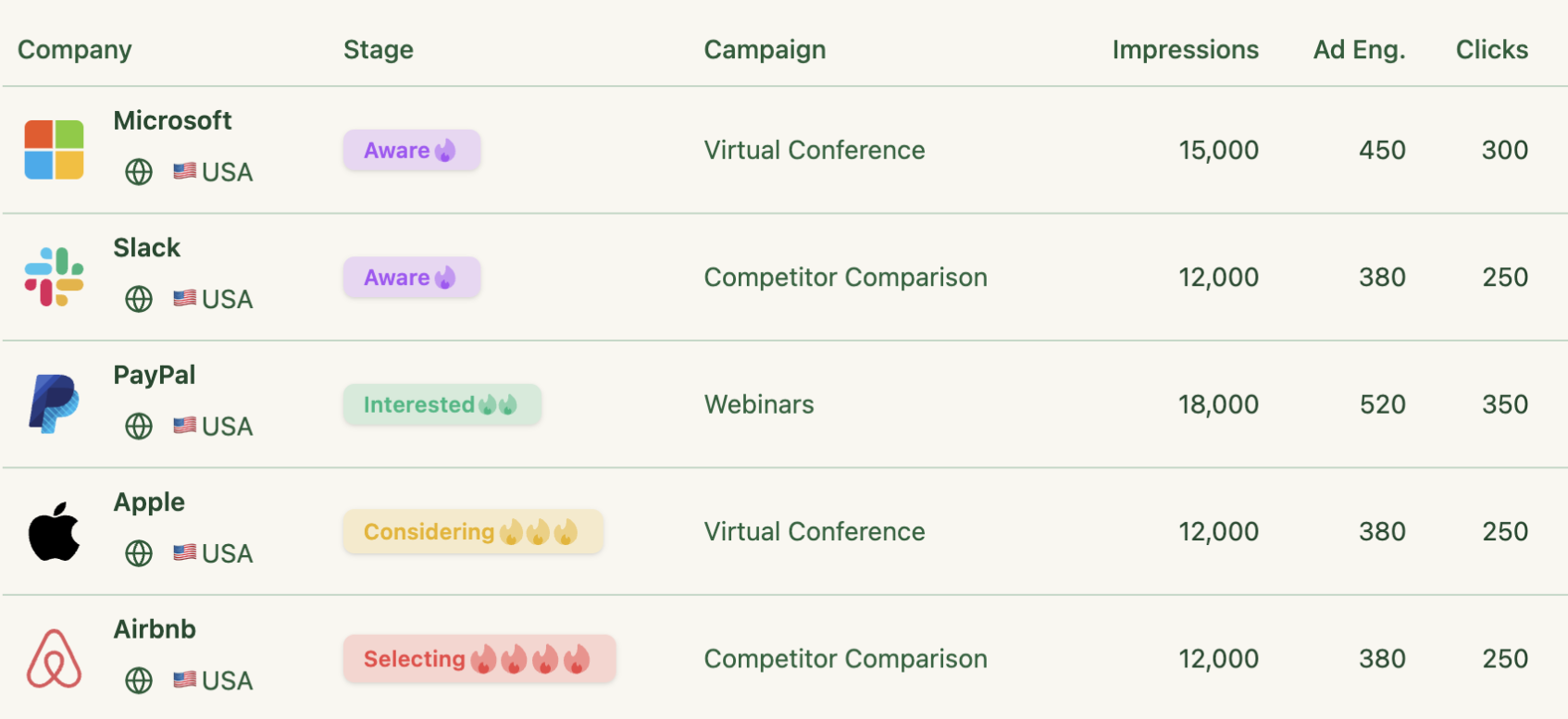
What should an ABM-ready LinkedIn pipeline reporting tool deliver?
Slick dashboards and long integration lists look fancy. For pipeline math that stands up, three pillars matter. Miss one and your numbers wobble.
Company-level impression tracking per campaign
Most prospects never click. Sponsored Content CTR often hovers around 0.44%. LinkedIn primes demand: someone sees your ad on Monday, Googles you on Thursday, and requests a demo on Friday. That’s not “organic” in a vacuum. You need impression logs at the company level by campaign (and group) to credit assists and connect exposure to pipeline movement.
Contact-level impression data isn’t available via the official API. Reverse-IP guessing misfires often. Treat those reads as directional only.
Two-way CRM integration
Your reporting must write back to the system of record and pull live deal data forward for matching.
Push company-level ad data to your CRM
Sync impressions, clicks, and engagement into HubSpot or Salesforce as company properties. Kill CSVs. Make it filterable by lists, views, and reports that sales actually uses.
Match ad impact to your deals
Join CRM company records to LinkedIn campaign analytics. When Company X opens an opportunity and crosses your impression threshold, attribute influence to the right campaigns and refresh totals in near-real time. That’s pipeline reporting, not guesswork.
First-party, official data
LinkedIn polices scraping and automation.
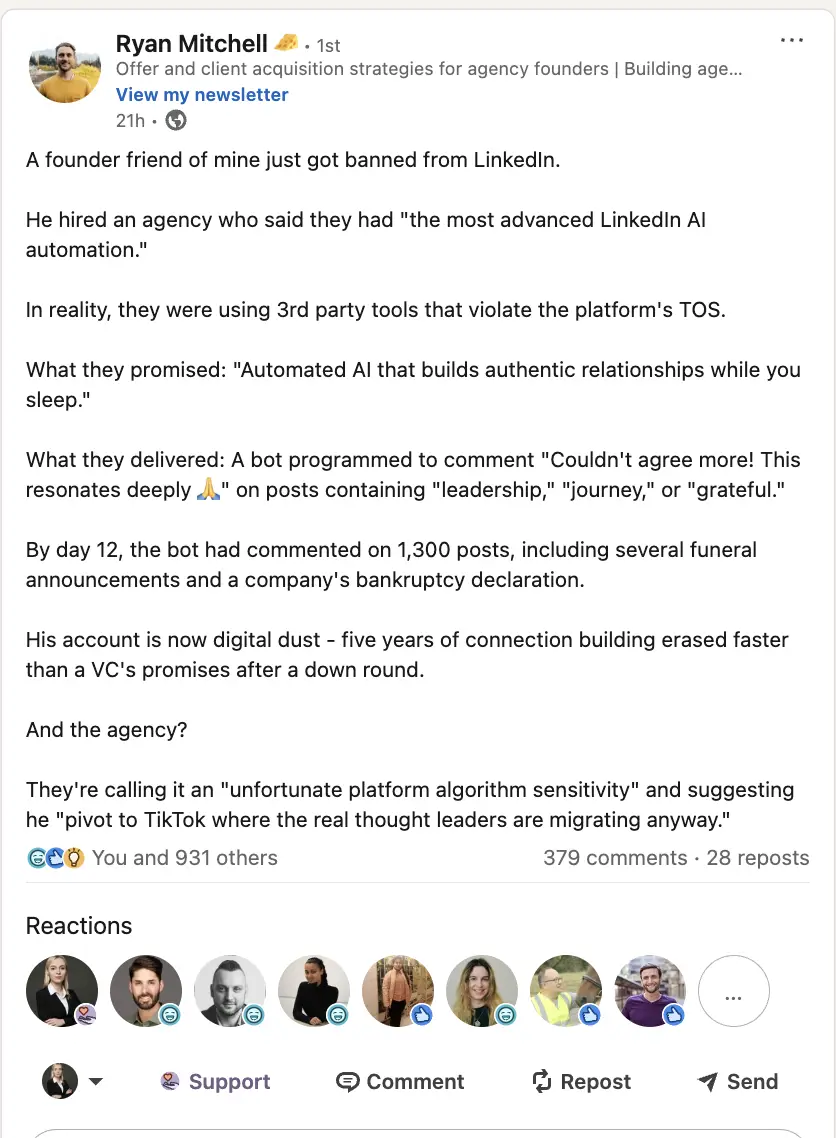
Deanonymization relies on cookies and IP ranges—fine for click paths, not impressions—and misclassifies often.

DANs add bot noise and false positives. The punchline:
For ABM pipeline reporting, use first-party, account-level LinkedIn engagement via the official API.
Now, the top contenders and how they stack up.
Wait, Why Not Use LinkedIn’s Own Stack for ABM Pipeline Reporting?
Okay, this article is about the tools you should use for ABM pipeline reporting and if you are wondering why not LinkedIn’s stack, here’s why:
LinkedIn’s Revenue Attribution Report (RAR) is lead-centric, while ABM pipeline reporting is supposed to be account-centric. You can stitch the native pieces together to see the influence on revenue from leads, but you will still miss critical account-level insights for the pipeline.
What the native stack covers today
First, how to set up the native reporting:
Connect your CRM to RAR:
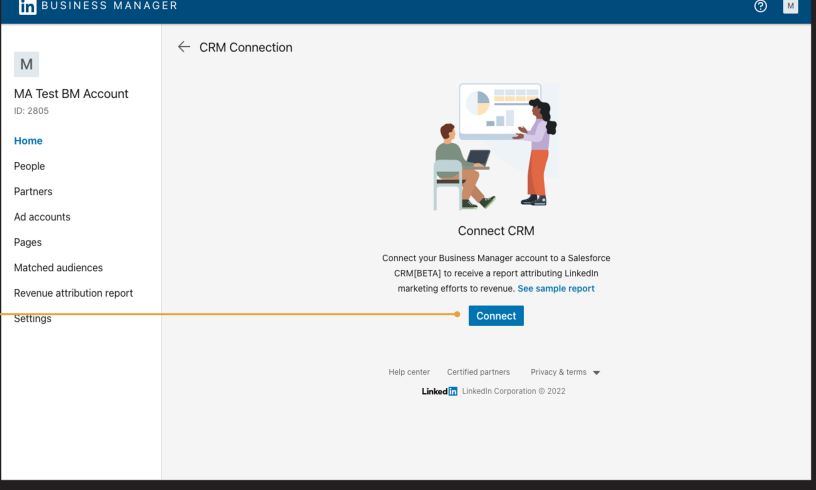
Provide the requested credentials, including Username, Password, Environment URL, and Security Token:
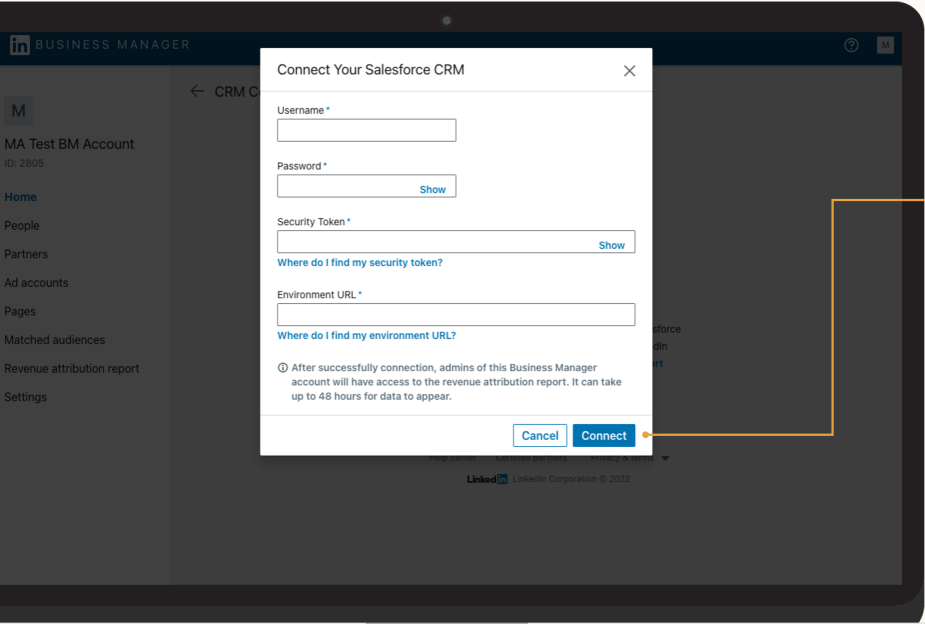
Data may take up to 72 hours to appear. Confirm the CRM opportunity field that RAR should treat as the revenue source of truth.
Set your minimum impression threshold for influence:
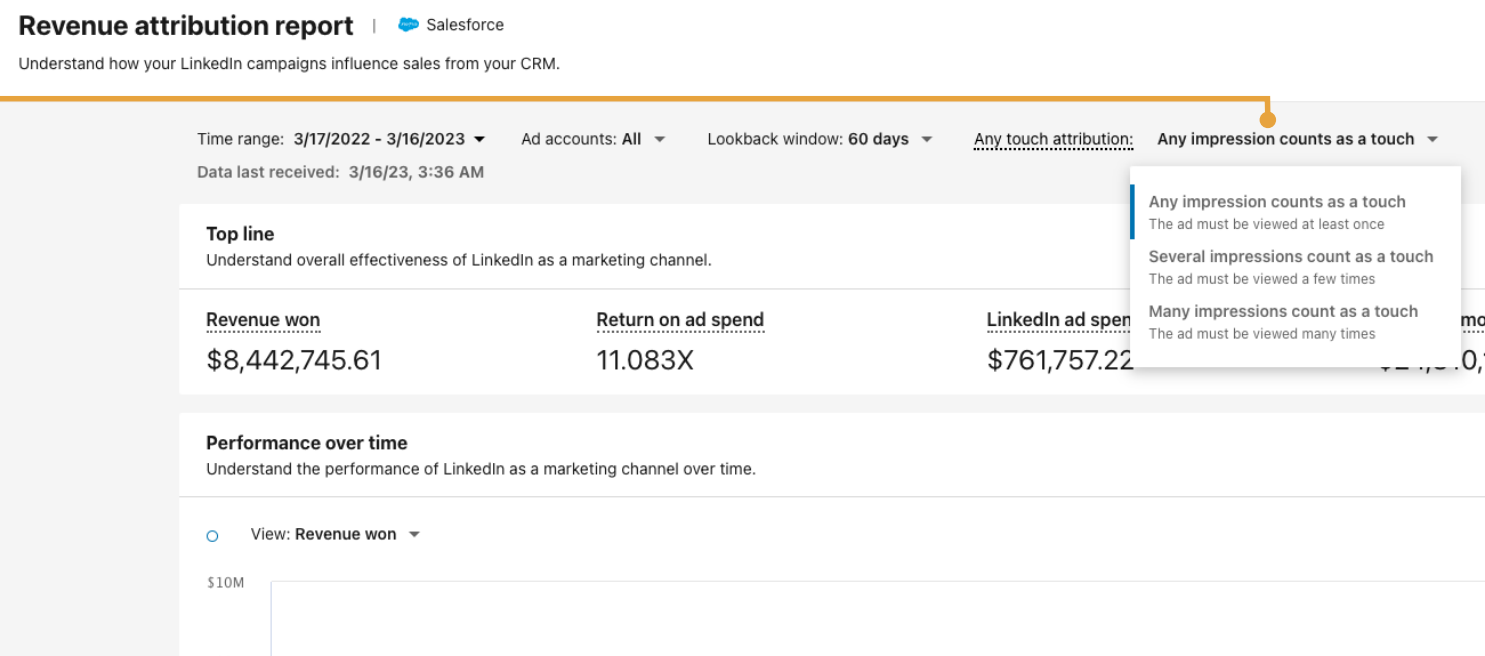
- Single impression counts as influence.
- A few impressions count as a touch.
- Many impressions raise the bar for influence.
Choose a lookback window:

Then set the reporting time frame:
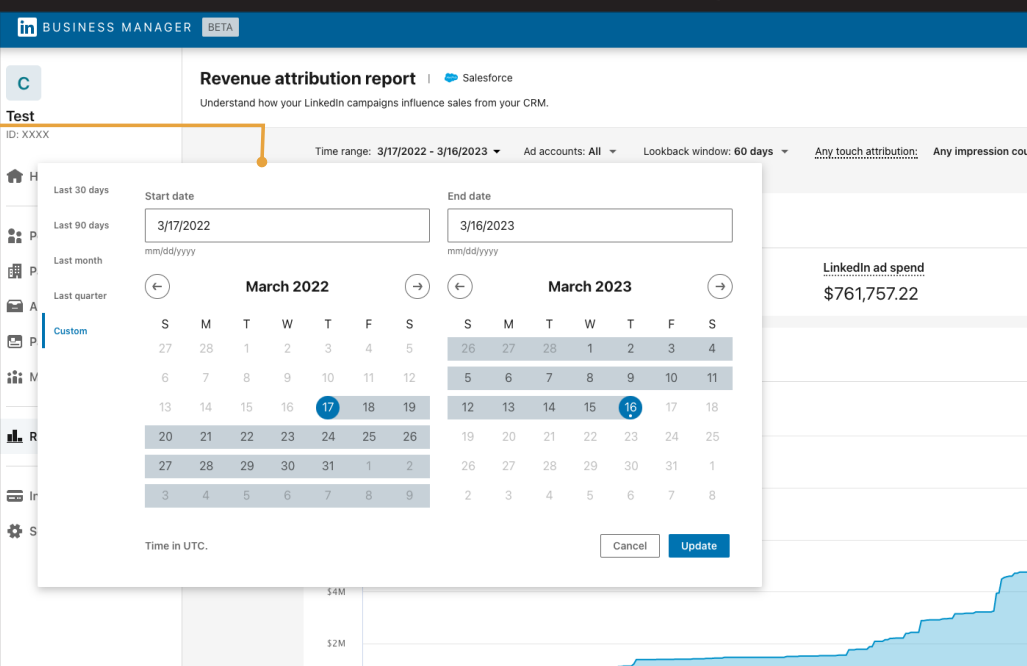
If you run multiple ad accounts, filter by the account or combine them as needed.
Install the Insight Tag across your site:
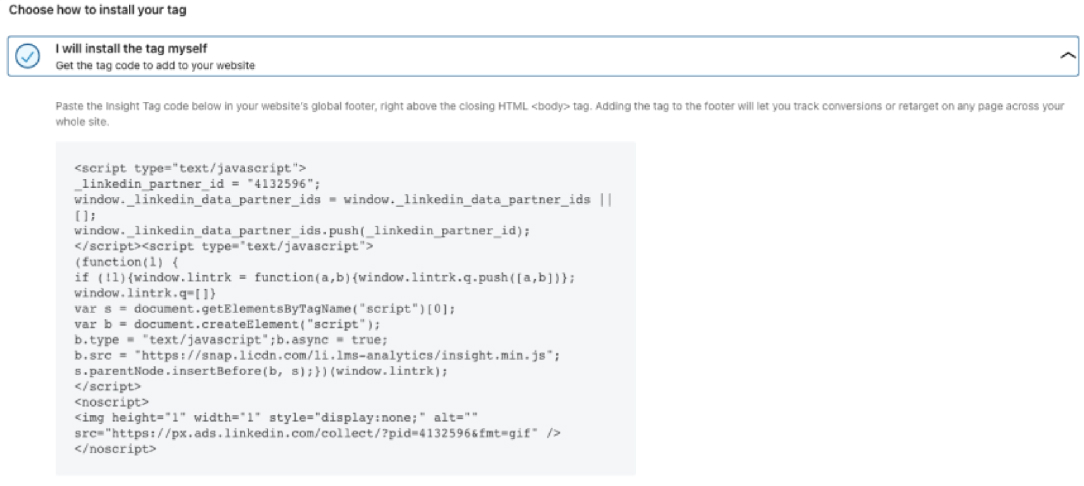
In Campaign Manager, configure conversions:
- Website Tag Conversions: submissions or link clicks that load a thank you page.
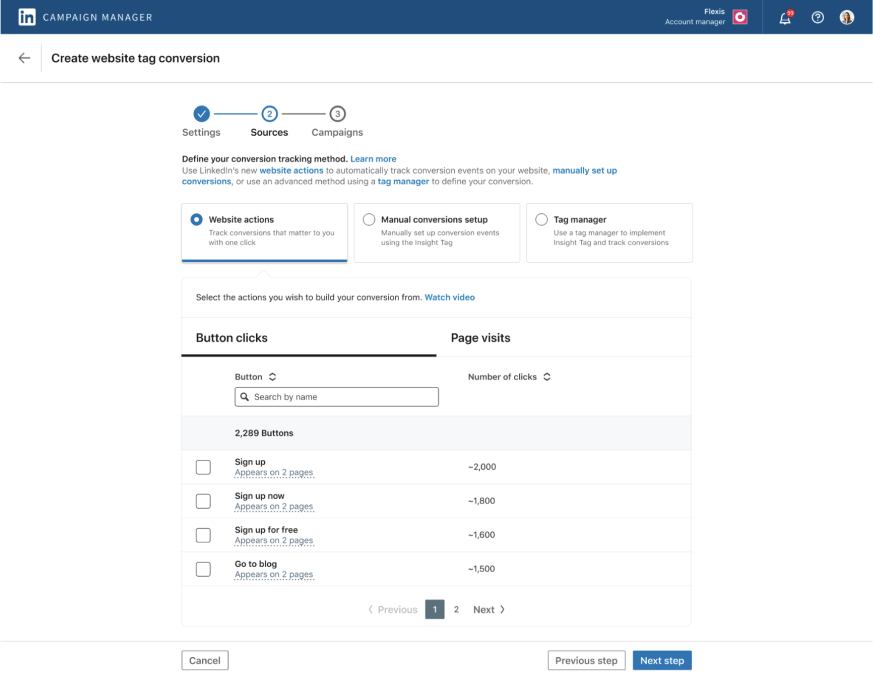
- URL or Page Conversions: visits to specific URLs after an ad click, useful for deeper content like a blog post.
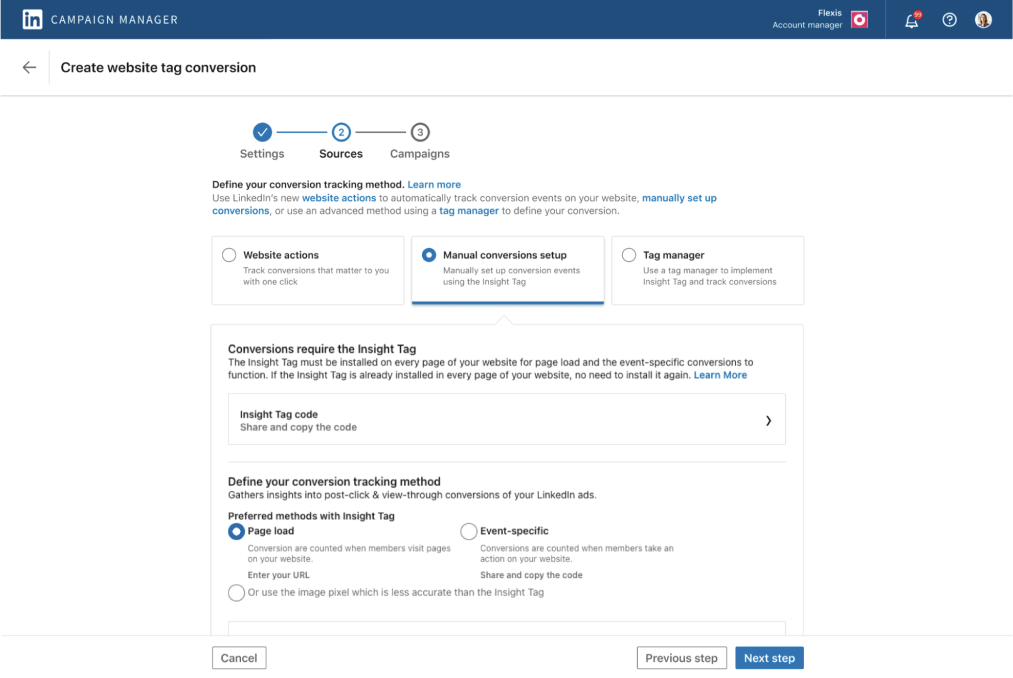
- Event Conversions: actions that do not change the URL, for example AJAX submits.
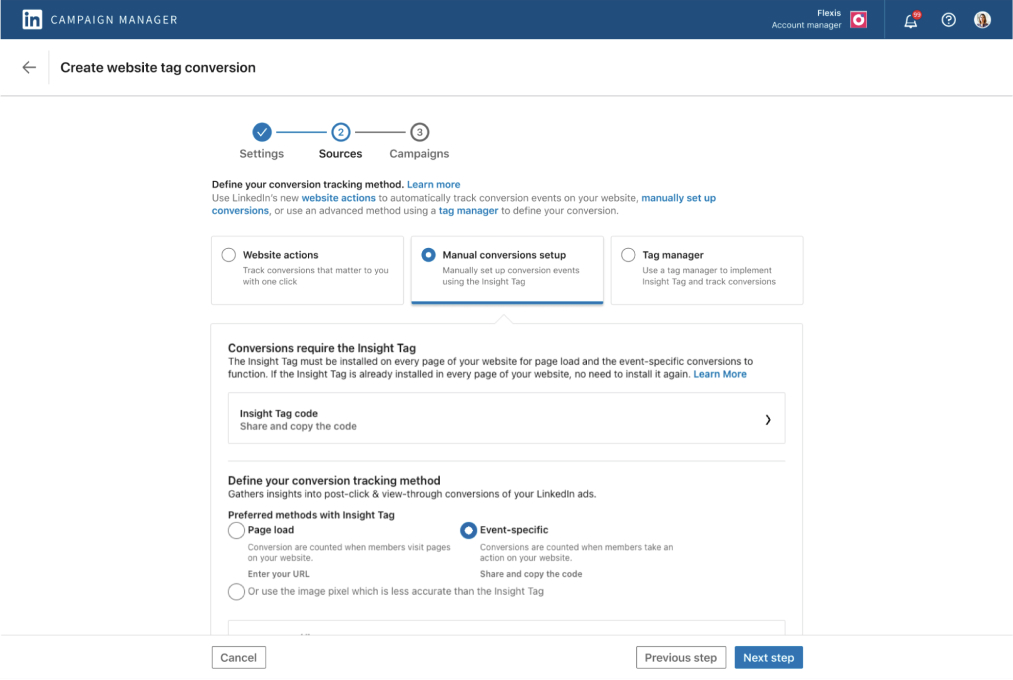
Set up CAPI as well:
- Mirror the same conversions in Campaign Manager.
- Post server-side events to
/conversionEventswith the rule URN, timestamp, value, and hashed identifiers.
Now, with this setup done, RAR can attribute most online conversions that preserve cookies and device continuity. To capture more, upload offline conversions from your CRM into Business Manager or stream them via CAPI with timestamps and hashed emails.
Where the native stack fails for ABM pipeline proof
- Lead lens, not account lens. Buying groups convert with many people. RAR ties influence to individuals and misses company-level lift across contacts.
- View-through gaps. Cookie loss, browser privacy, cross-device jumps, and ad blockers hide exposure that still warms the account.
- Creative and campaign opacity. RAR does not reveal the exact ad or message that moved the account into pipeline.
- Click bias. UTMs rescue clickers. They do nothing for silent viewers who still influenced the deal.
- Offline and lagged conversions. Manual files or CAPI streams are extra work. Mismatched timestamps or IDs dilute confidence.
- Person A views, Person B converts. Same company, different humans. Native reports require manual checks in Campaign Manager to infer influence.
- Arbitrary thresholds and windows. Impression minima and lookbacks change the story more than the marketing did.
- Slow refresh. Data can take up to 72 hours. Sales needs alerts in near real time when an account heats up.
- Multi-account fragmentation. Multiple ad accounts split truth unless you normalize everything outside LinkedIn.
- No account-level rollup across campaigns. You cannot see a single company’s cumulative impressions, clicks, and engagement against pipeline stages without external stitching.
If you must stay native, use these workarounds
- Mirror every critical conversion in both Insight Tag and CAPI, then reconcile against CRM opportunities.
- Automate offline uploads from CRM with strict timestamp and hashed email standards.
- Run a weekly company-level audit. List converting companies, then verify prior impressions, clicks, or engagement for those same firms in LinkedIn campaign manager before the conversion date.
See, for true ABM pipeline reporting, you need company-level capture of impressions, clicks, and engagement per campaign group, plus a clean push into the CRM with account stages and intent. That is the gap the native stack does not fill on its own.
Let’s look at some tools now that fully or partially provide ABM pipeline reporting.
ZenABM
ZenABM is built for LinkedIn ABM pipeline reporting. You get view-through coverage, native CRM write-back, plug-and-play ABM dashboards, and intent-based scoring. The roadmap ships fast.
Does ZenABM fulfil the prerequisites?
These aren’t “nice to have.” They’re table stakes, and ZenABM leads with them.
Company-level impression tracking per campaign

ZenABM records each account that:
- Was served an ad
- Reacted (like/comment/share)
- Clicked
- Never visited your site (pure view-through)
Example: Company X collects 50 impressions with zero clicks, then opens a $75k opportunity two weeks later. ZenABM shows which campaigns warmed the account and shares credit across all exposures. All via the official LinkedIn API.
Two-way CRM integration
Native, no-code, bi-directional sync, so pipeline reporting isn’t a science project.
Connects LinkedIn Ads to real pipeline and revenue
ZenABM maps LinkedIn engagement to open opportunities and closed-won inside your CRM.

You also see per-deal values tied to ad exposure.

So you can finally say:
- This campaign added $75k to the pipeline
- This campaign group touched 22 closed deals
- Quarterly LinkedIn ROAS ran 5.2×
Pushes engagement data into HubSpot automatically as company properties
ZenABM writes LinkedIn engagement into HubSpot as properties like “LinkedIn Ad Engagements – 7 days” and “LinkedIn Ad Clicks – 7 days.”
Roll them up as “Cumulative LinkedIn Ad Engagements” and “Cumulative LinkedIn Ad Clicks” for long-view trendlines.
What else is strong about ZenABM?
Automated scoring, BDR routing, and intent
ZenABM calculates a rolling “Current Engagement Score” using impressions, clicks, and freshness.

Qualified accounts are auto-assigned to reps in HubSpot.

Campaign tags feed buyer-intent insights.
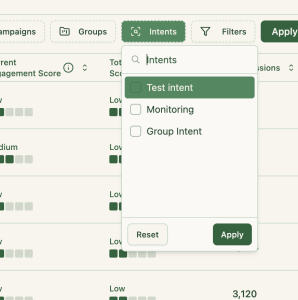
Built-in ABM dashboards
No Excel gymnastics or custom CRM builds. ZenABM ships dashboards that compute ROAS, lift, pipeline per dollar, and more.


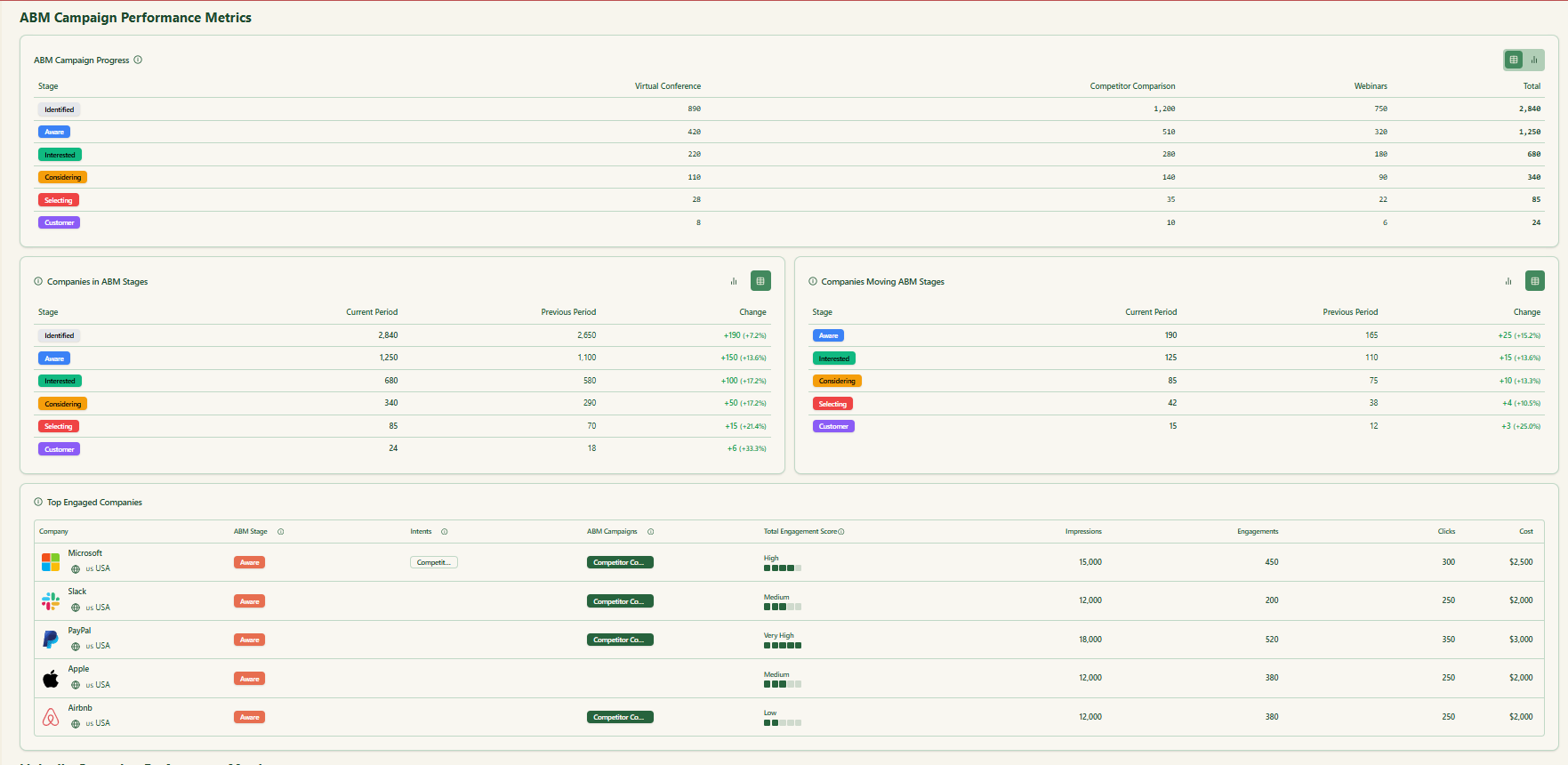
Net: You get end-to-end view-through analytics and a single place to run ABM pipeline math.
Want to see it in action? Book a demo here.
Cons
ZenABM focuses on LinkedIn ABM—not visitor ID, broad intel, programmatic display, or list building.
Bottom line: A focused LinkedIn pipeline reporting and attribution tool—lean, accurate, affordable.
ZenABM pricing
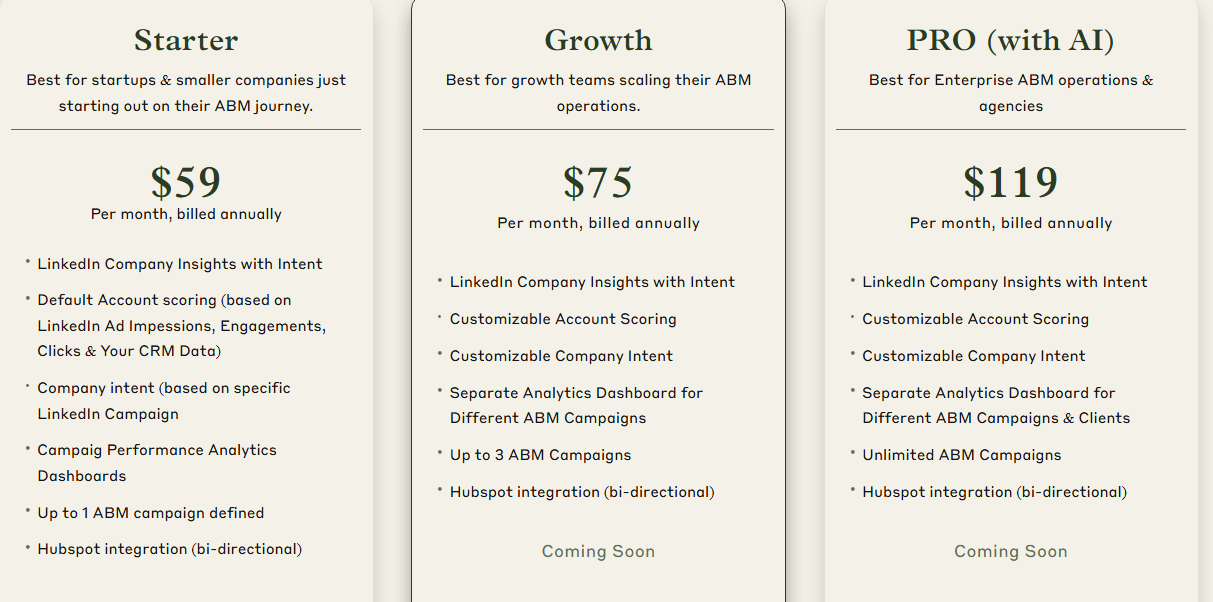
Three plans, minimal decision friction.
Starter ($59/mo, annual) fits small teams: company engagement insights, default scoring from CRM + ad data, campaign-level intent, one ABM campaign, native two-way HubSpot.
Growth ($75/mo) adds configurable scoring, dashboards for up to three campaigns, and queued upgrades like auto-routing, Slack alerts, and weekly rollups.
Pro ($119/mo) suits larger teams and agencies: unlimited campaigns, client-ready dashboards, and upcoming AI helpers for impression control and campaign ops.
Every plan has a free trial. See the pricing page.
Factors.ai
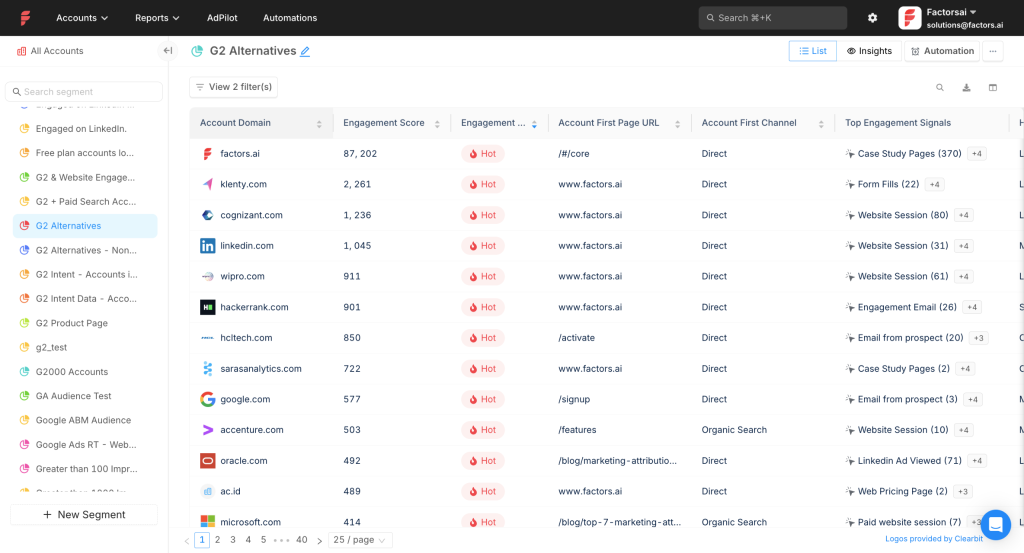
Supports LinkedIn, Google, and Facebook; adds automation, intent capture, deanonymization, scoring, and multi-touch reporting.
Does it fulfil the prerequisites?
For core data and pipeline mapping—mostly yes. CRM write-back is the gap.
First-party company-level impression tracking per campaign

Pulls impressions/clicks/spend via the LinkedIn API at campaign-group and campaign level—so you can tie exposure to pipeline movement.
Ties ad impact to pipeline and closed deals
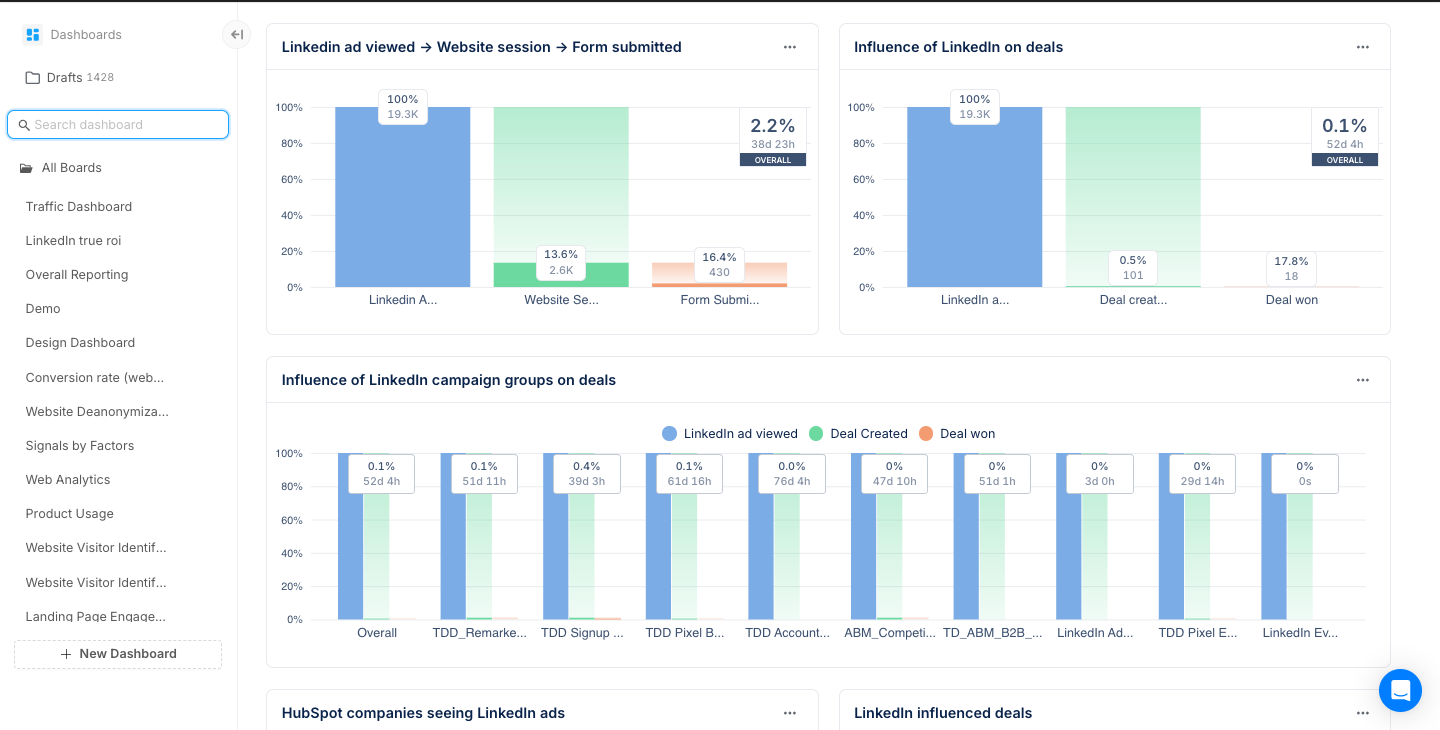
HubSpot/Salesforce joins bring opportunity and revenue views.
Note: No native company-property write-back. You can build workflows to approximate it.
LinkedIn AdPilot
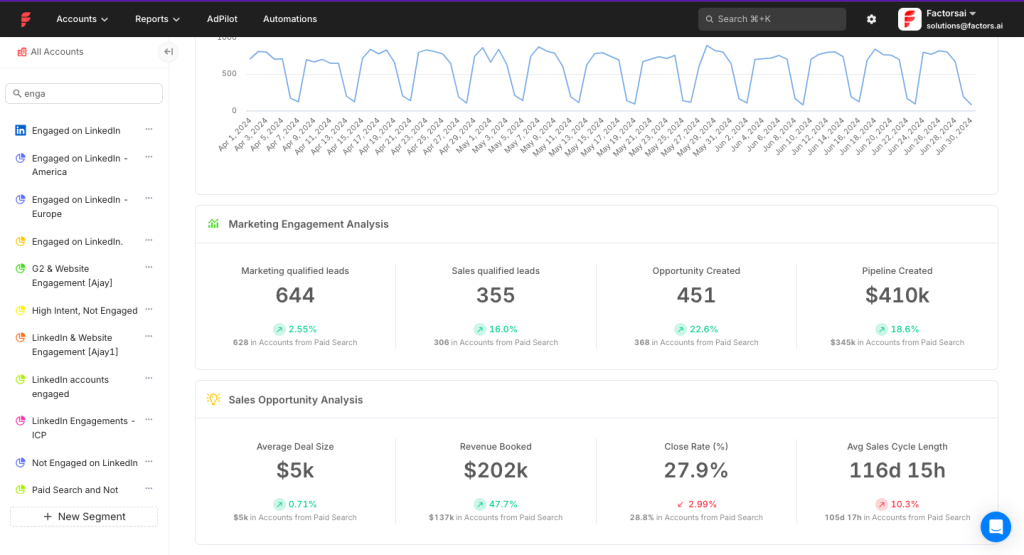
Audience building and delivery caps help tame frequency and protect pipeline quality.
Audience builder
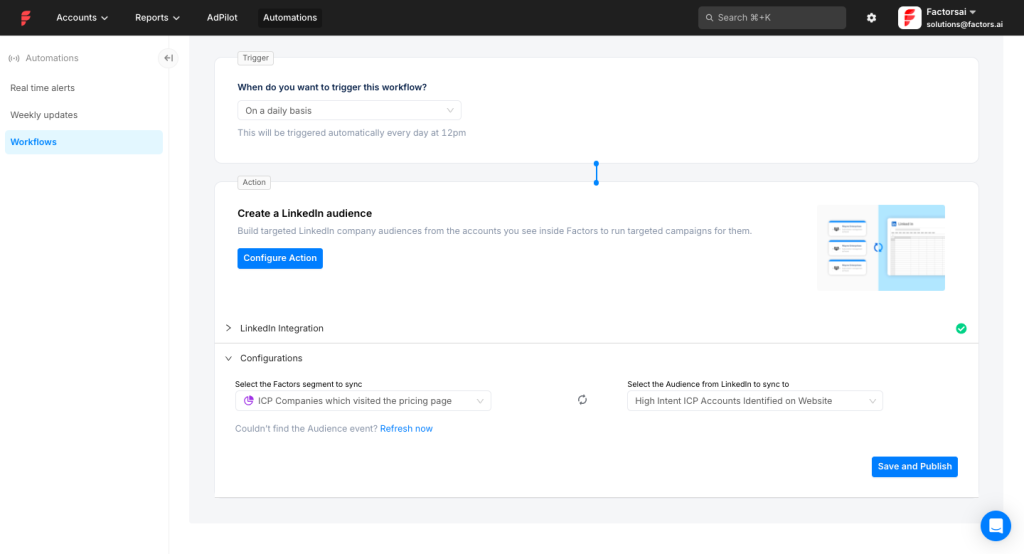
Impression capping
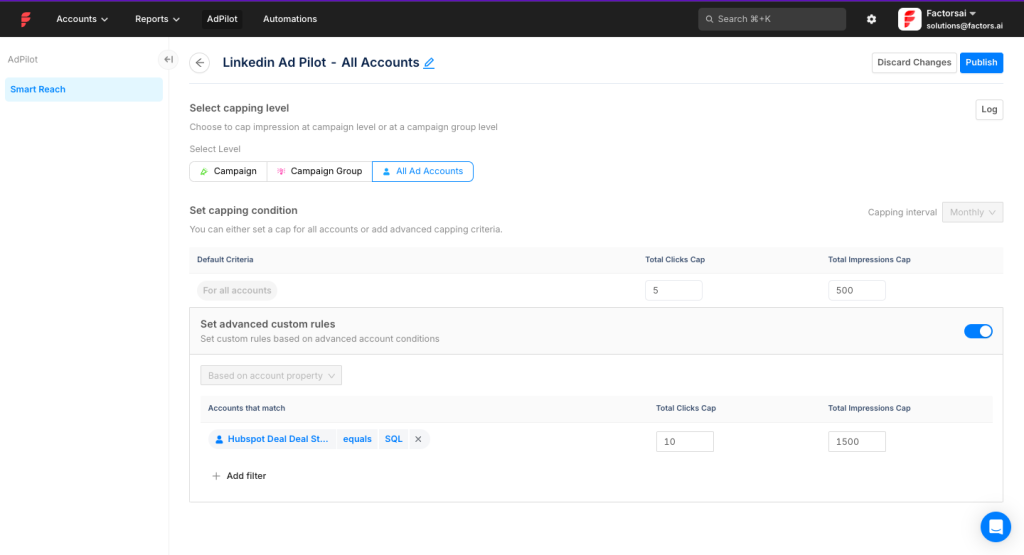
Additional features
Workflow automation
MAP/CRM/Slack hooks for ops teams.
Multi-touch and multi-channel attribution
Benchmark LinkedIn alongside other paid and owned channels.
Cons
- From $399/mo; weighted toward LinkedIn—overkill if your budget is elsewhere.
- UI quirks and asks for deeper Salesforce event tracking (source).
Bottom line: Great impression controls and account-level analytics. Pipeline write-back to CRM requires DIY.
Factors.ai pricing
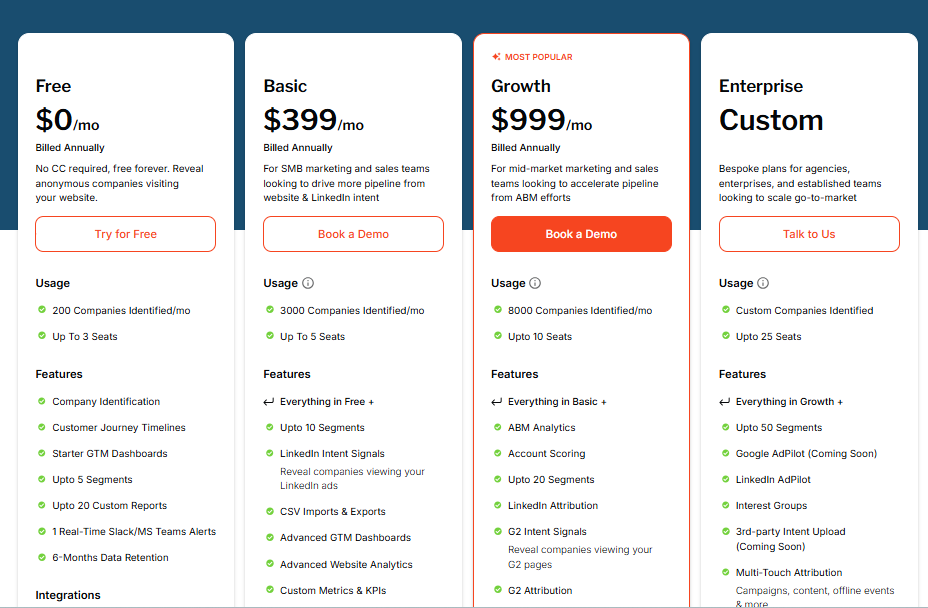
Free: basic visitor intel (up to 200 identified companies). Basic ($399) adds LinkedIn intent and core CRM links. Growth ($999) adds ABM analytics, G2, and workflows. Enterprise: custom.
Demandbase One
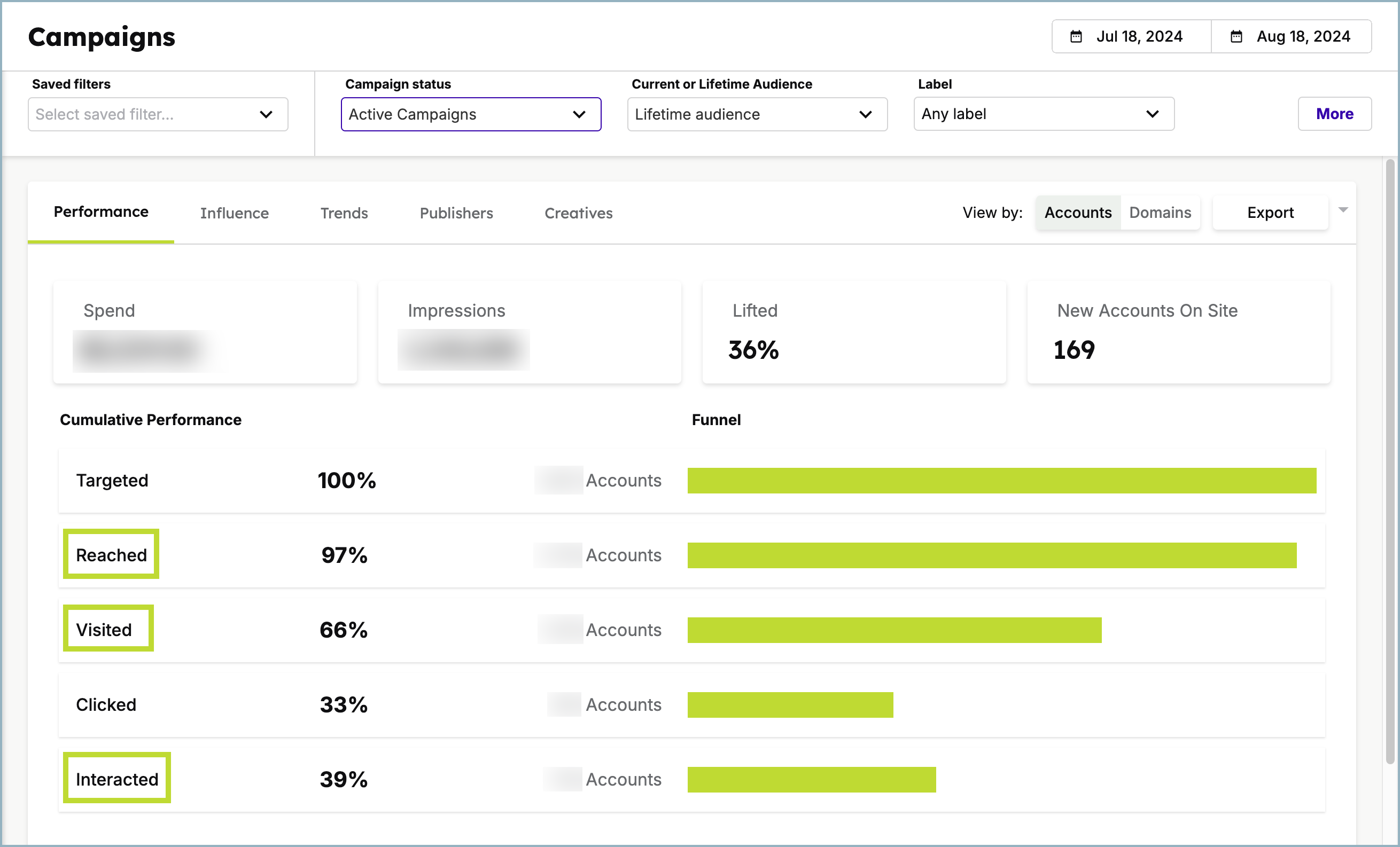
Full-stack ABM: lists, delivery, analytics, and revenue reporting across channels. Demandbase is the brand; Demandbase One is the platform.
Does Demandbase One fulfil the prerequisites?
Yes—across the board.
First-party company-level impression tracking
Certified LinkedIn partner with official API access. Account-level reporting is standard.
Two-way CRM integration
Bi-directional sync with HubSpot, Salesforce, Dynamics 365, Marketo, Pardot, Eloqua. Measure pipeline and revenue, and write engagement into CRM. A Capterra note: sales teams often live in Salesforce, so plan change-management.
Additional features for LinkedIn
Frequency capping

Bid optimisation with intent
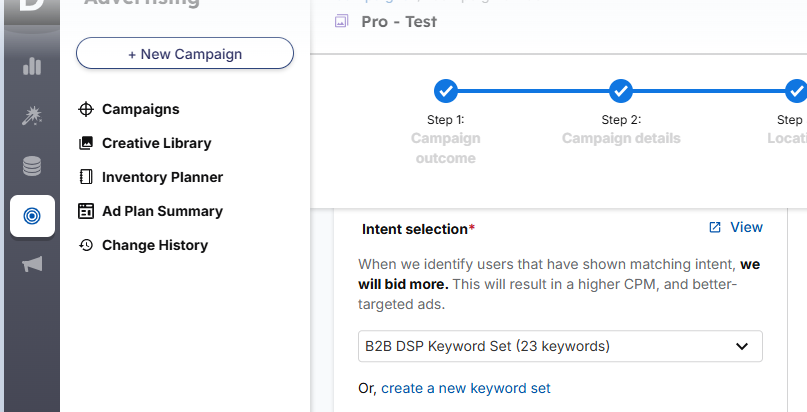
Prioritise spend toward in-market accounts using intent data.
Cons
Price and complexity. You’ll need time to land value.
Bottom line: Excellent if you run multi-channel ABM with budget and want deep control.
Demandbase pricing
Not public. Book a demo.
Terminus (by DemandScience)
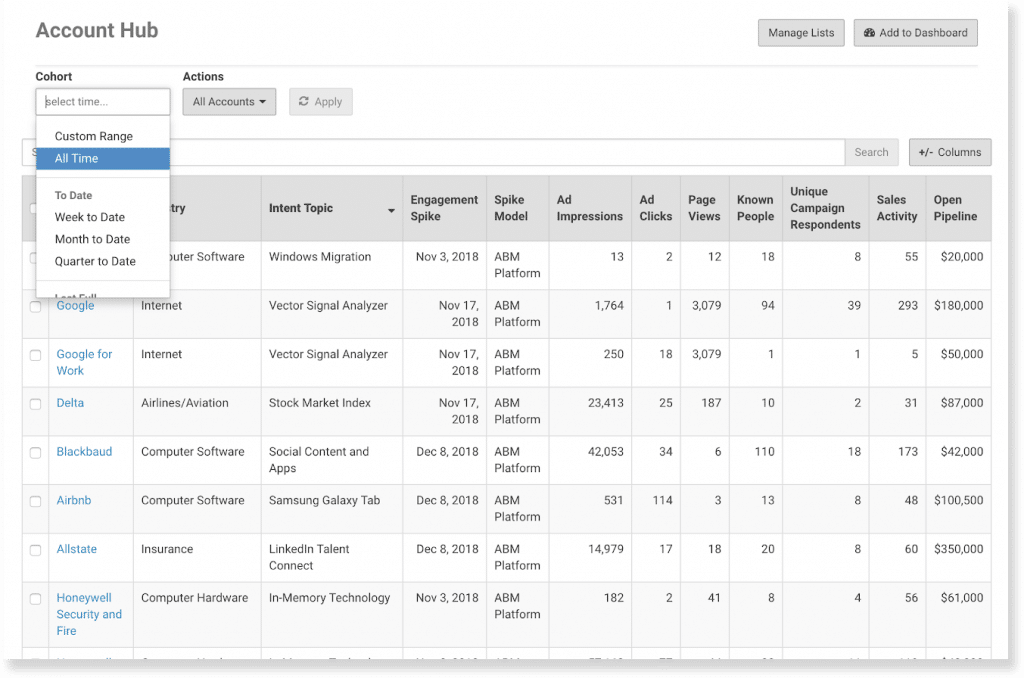
Ad-first engagement platform. Its LinkedIn Marketing Solutions integration updates delivery and analytics quickly.
Does Terminus fulfil the prerequisites?
Partly.
Limited company-level impression tracking per campaign

Strong for uploaded/CRM Matched Audiences; won’t cover every account outside those lists.
Two-way CRM integration
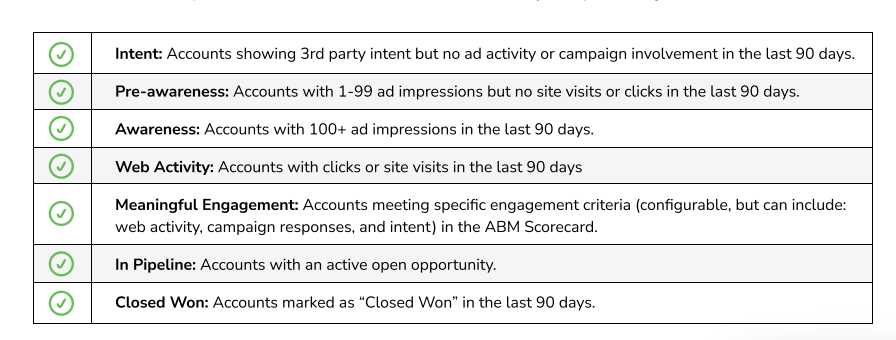
Salesforce-centric funnel views and exec dashboards.
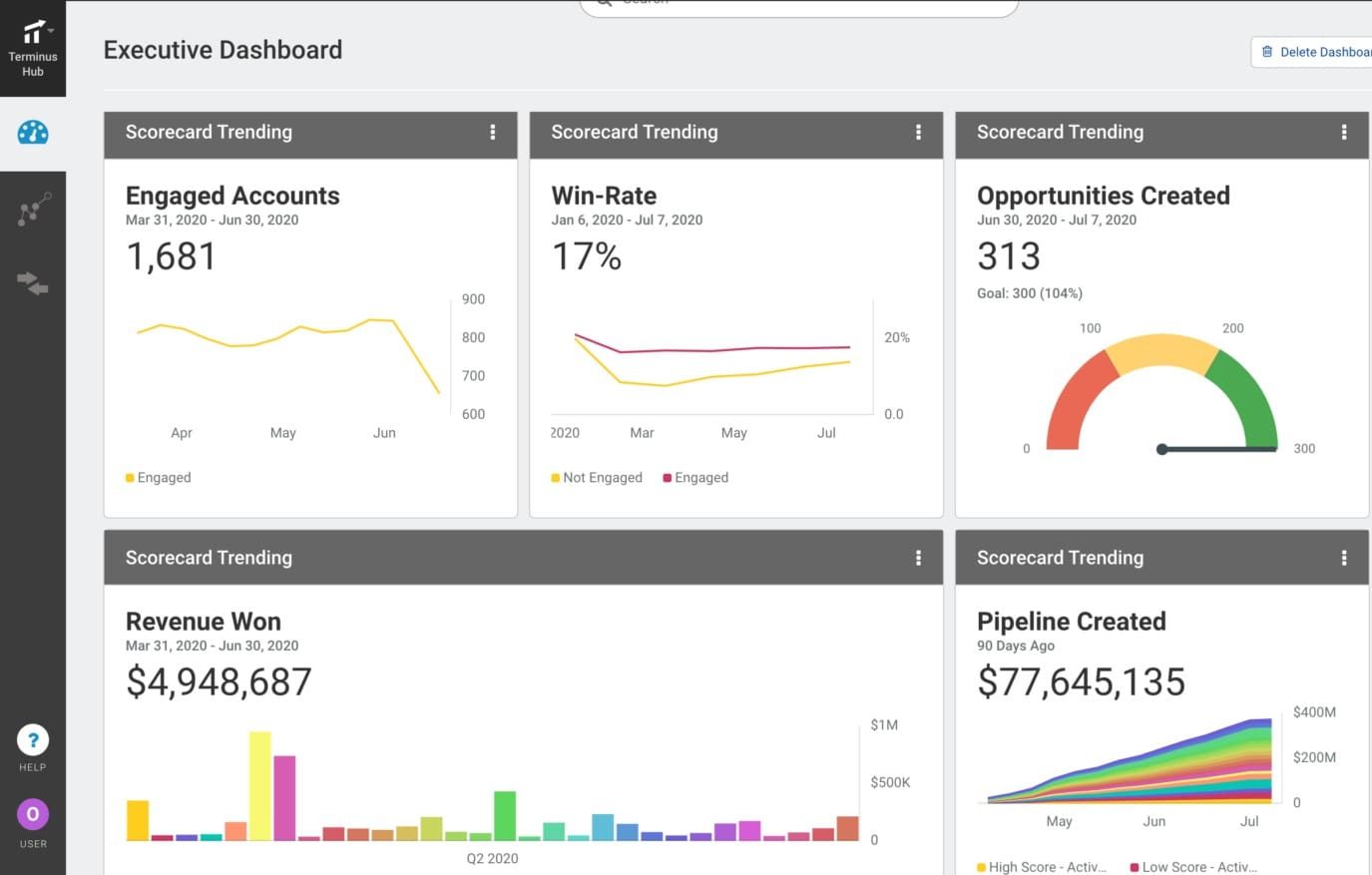
Additional features
Multi-channel, multi-touch attribution
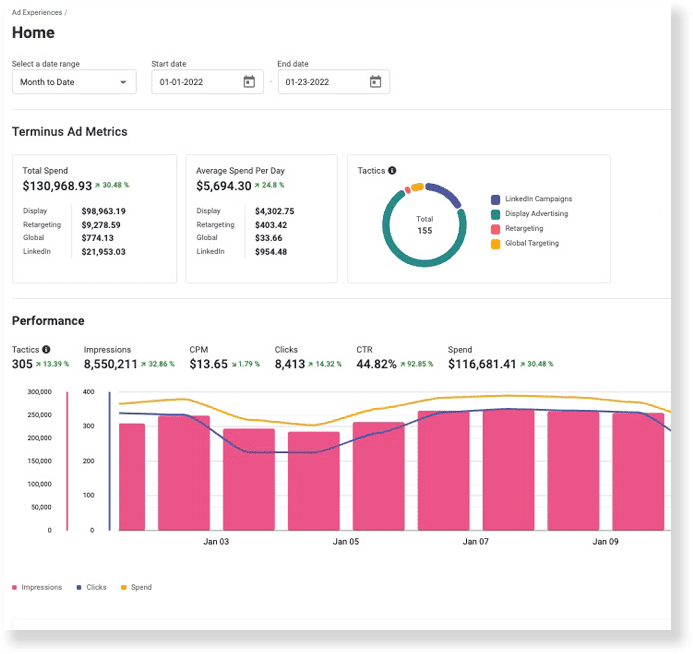
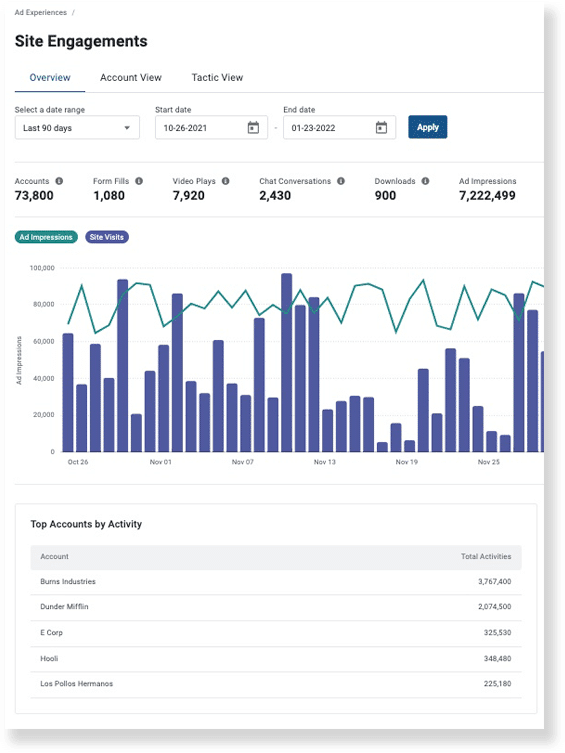
Build and trigger LinkedIn campaigns inside Terminus
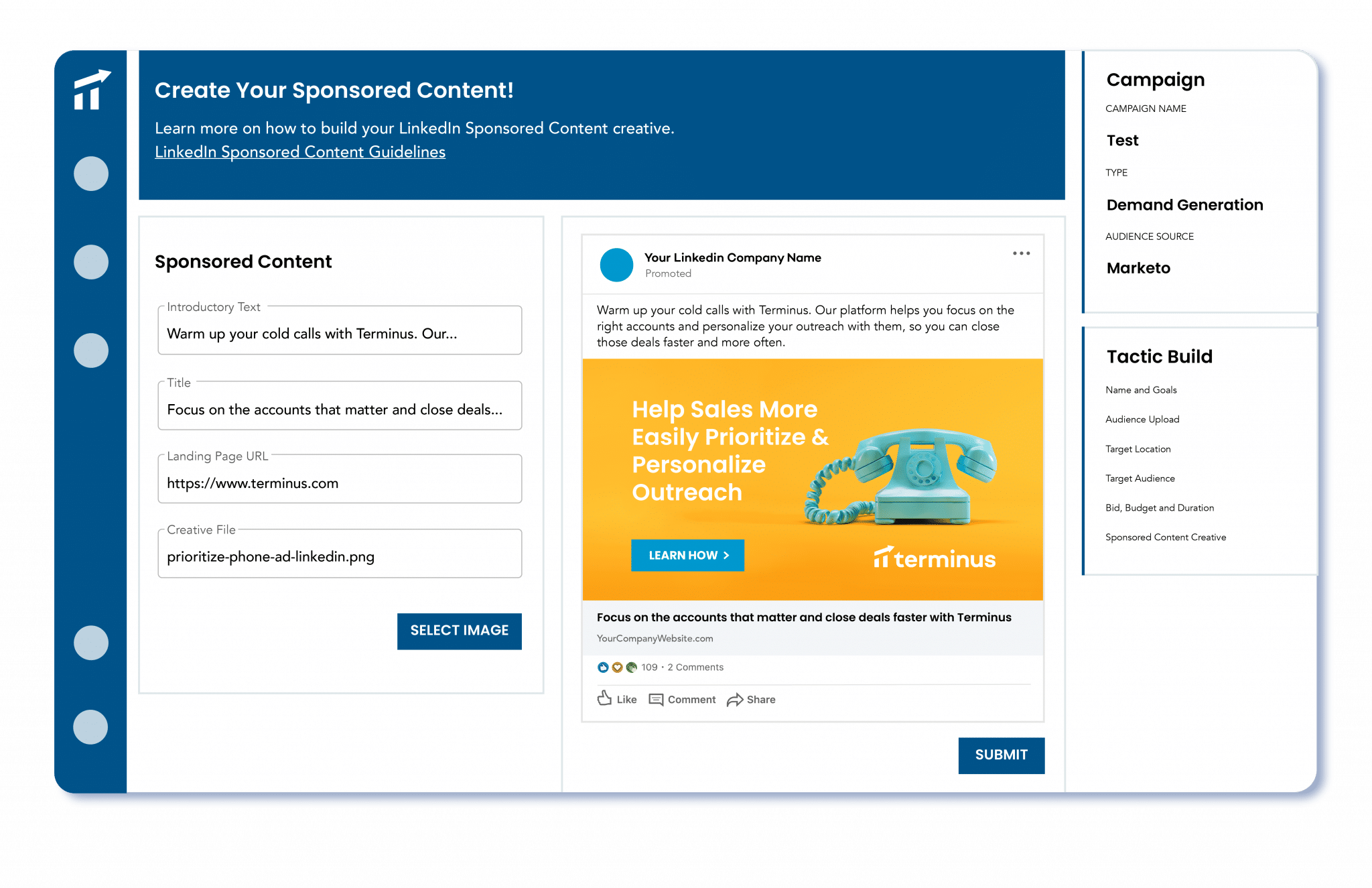
Triggers from Outreach, Salesloft, Uberflip, Bombora intent, etc.
Cons
- More ad-ops centric than full ABM suite.
- Contract floors can pinch smaller teams.
Bottom line: Good LinkedIn analytics within curated lists; not the cheapest if you’re LinkedIn-only.
Terminus pricing
Now part of DemandScience. Contact sales.
HockeyStack
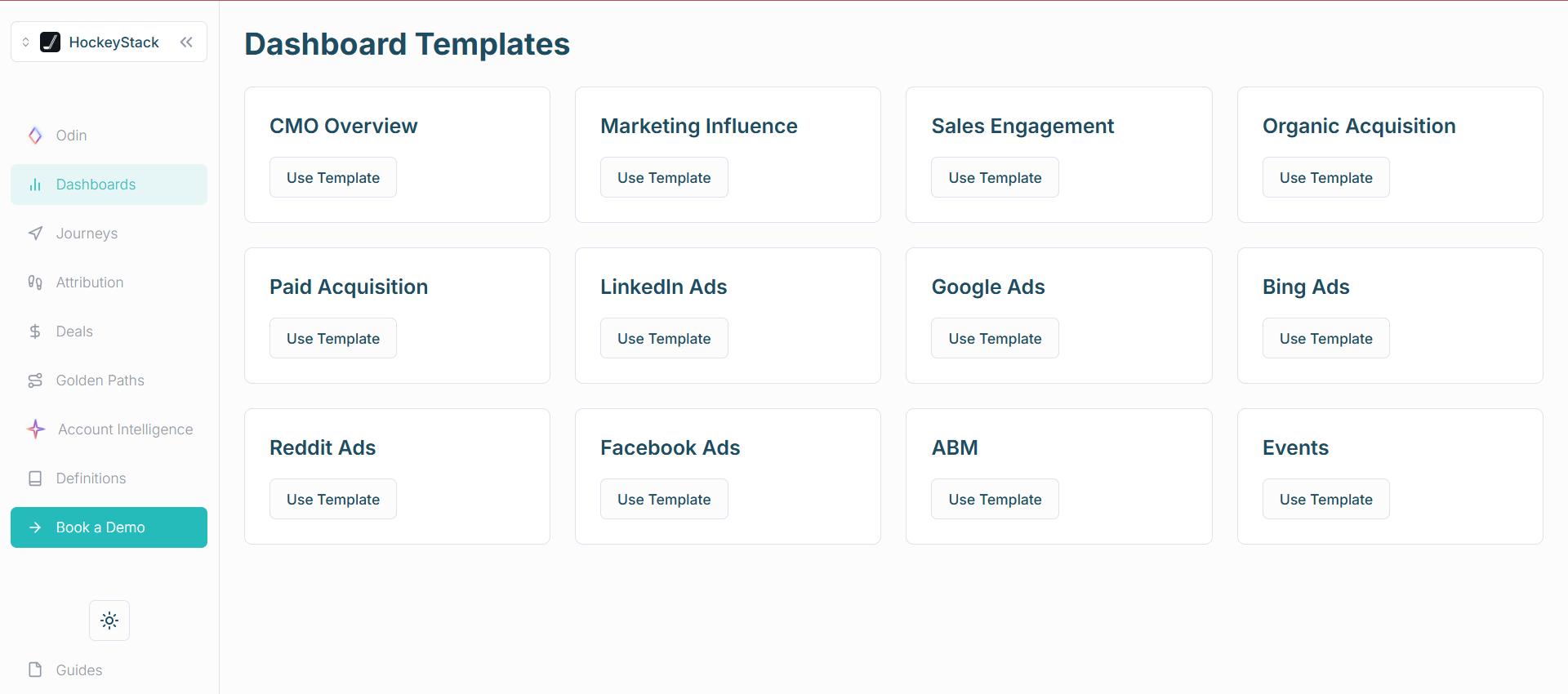
B2B analytics platform that blends LinkedIn Ads, site analytics, and CRM touchpoints into account and person-level paths.
Does HockeyStack fulfil the prerequisites?
Almost.
First-party company-level impression tracking

CRM integration for pipeline and revenue
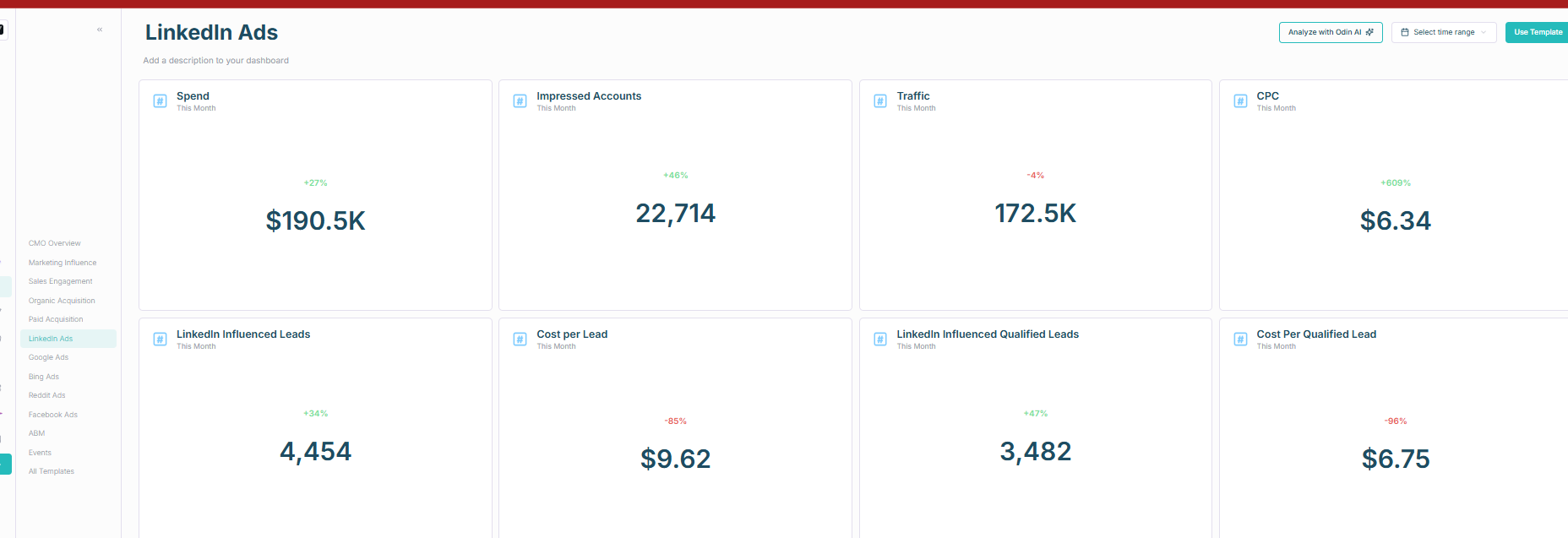
Note: One-way CRM sync; you’ll need workflows to push back into CRM properties.
Additional features
Multi-channel, multi-touch attribution across 17 sources
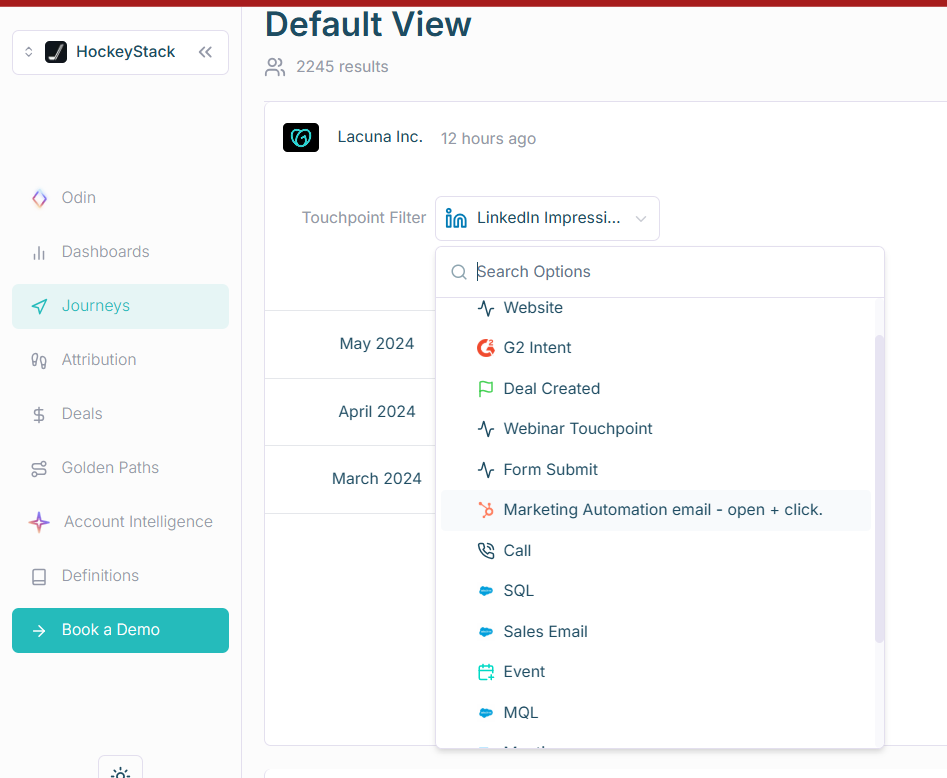
Person-level detail
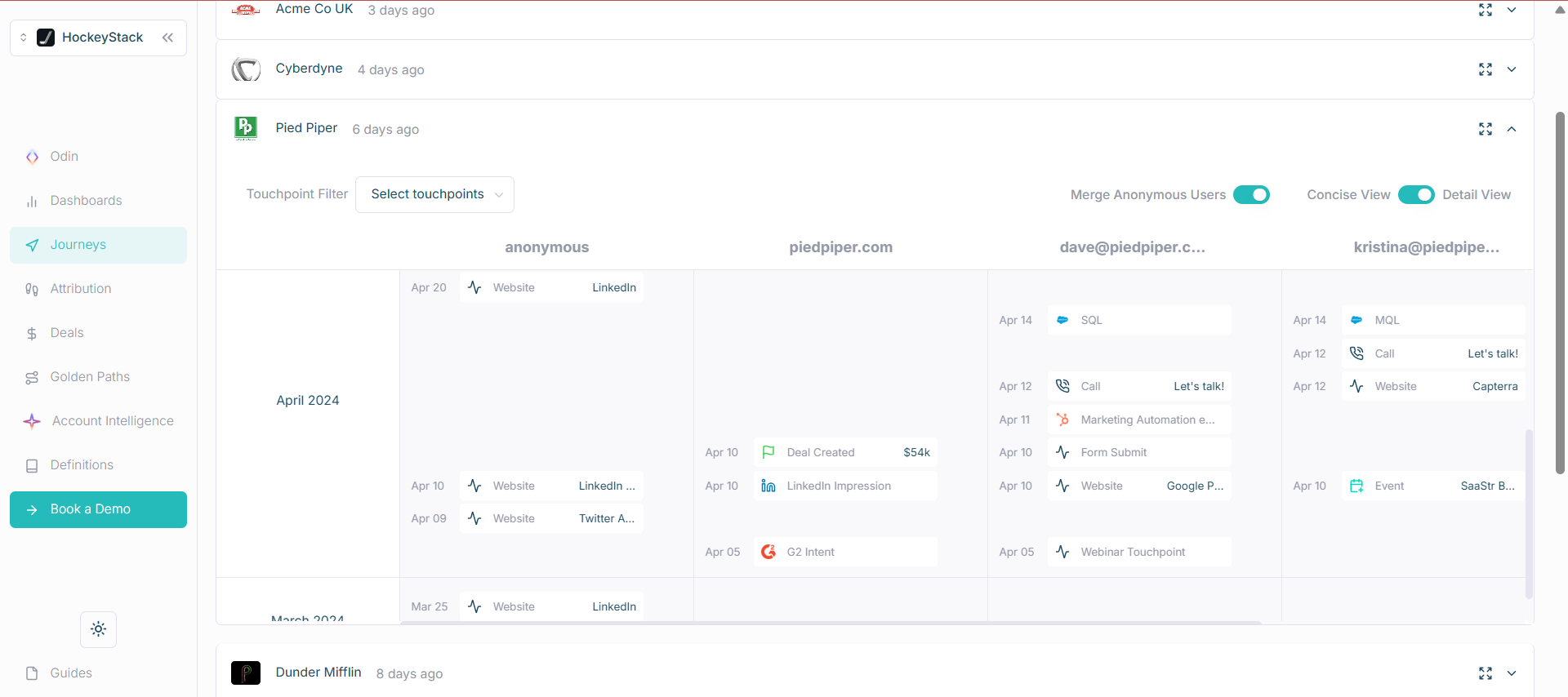
Be cautious: cookies/reverse IP affect identity fidelity—fine as supporting evidence.
Attribution models, funnels, and “Golden Paths”
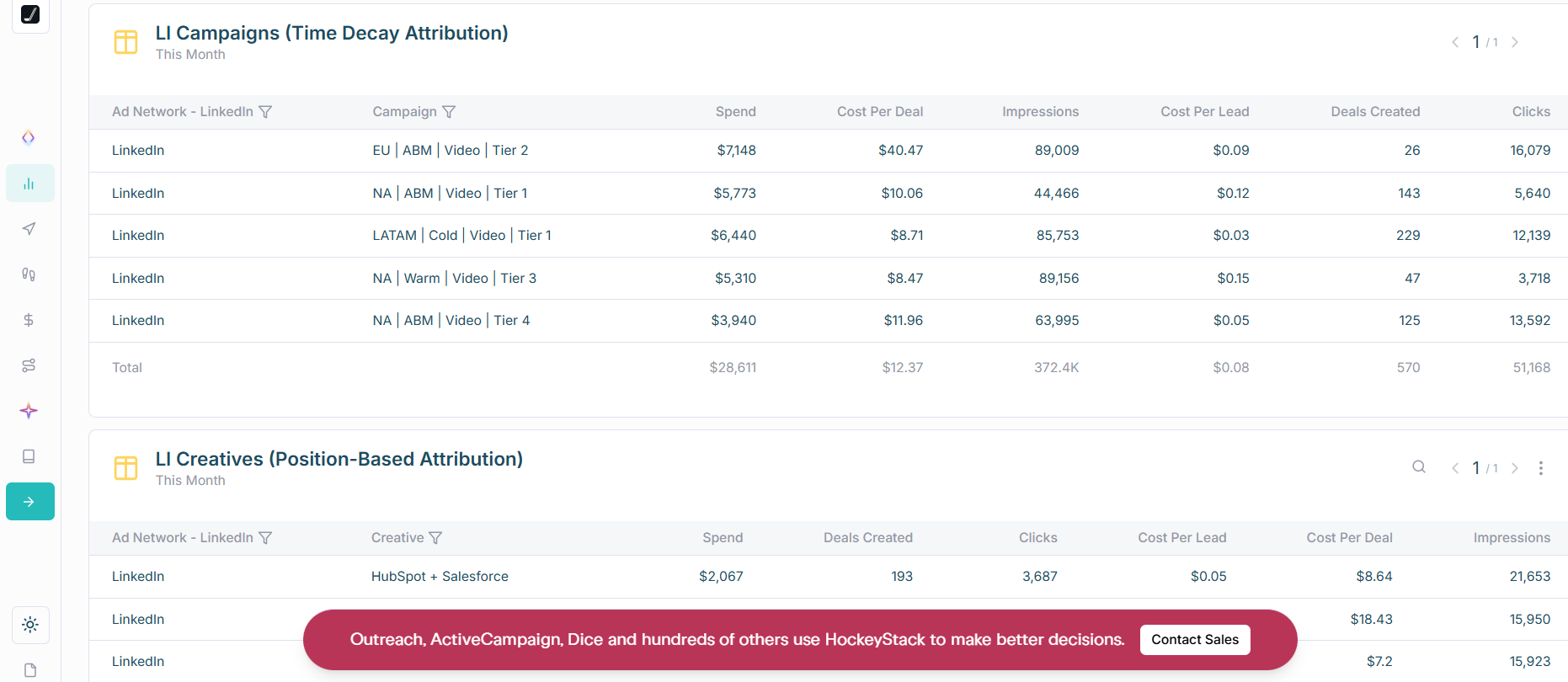
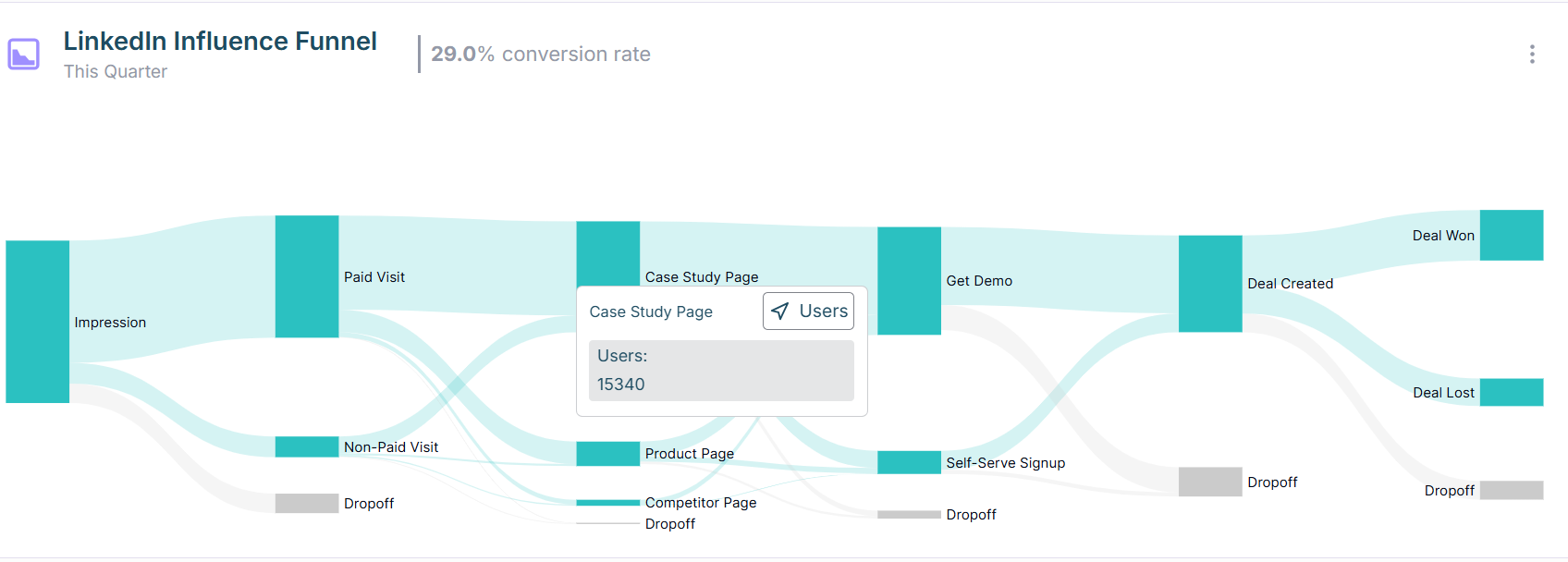
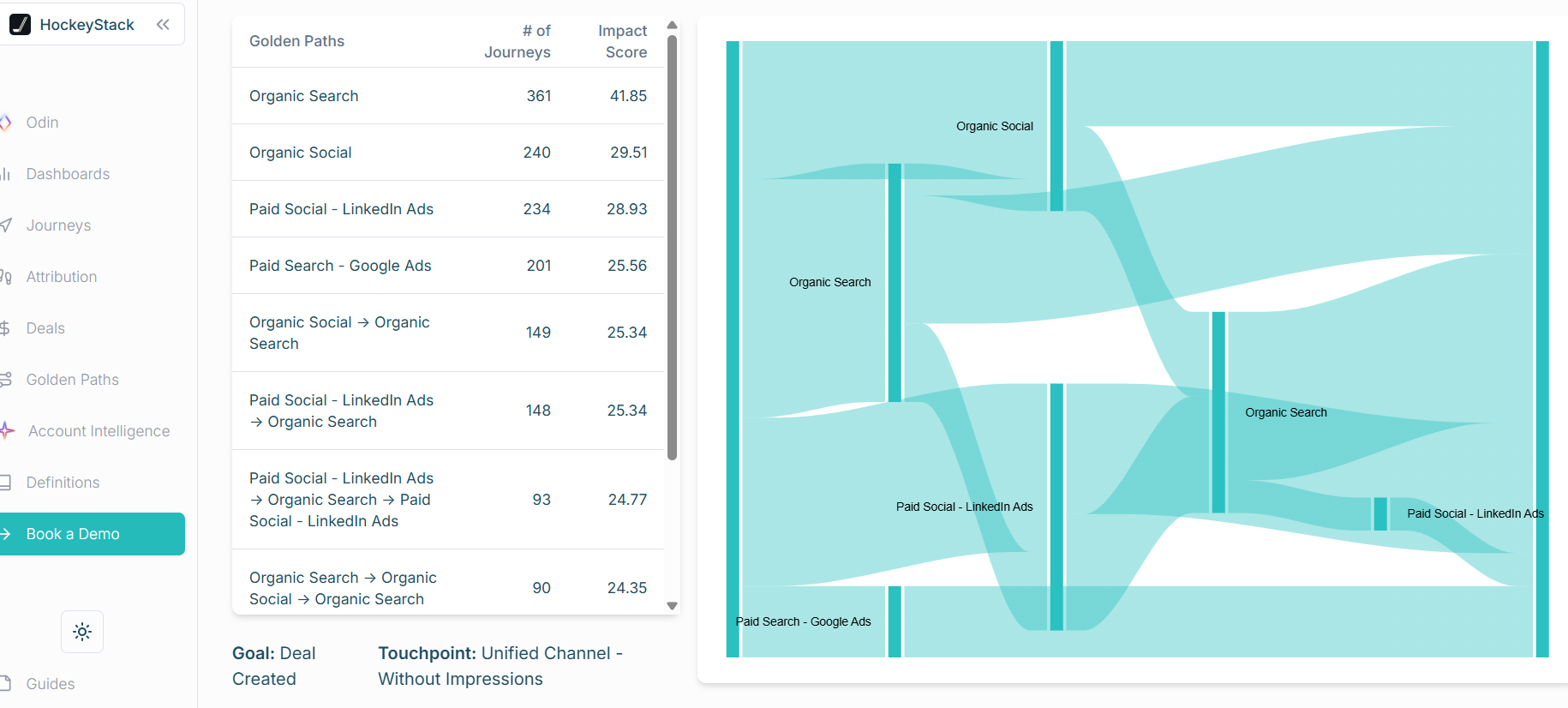
Cons
One-way CRM sync, identity reliance on cookies/IP, and some UI depth gaps (see G2).
Bottom line: Strong cross-channel analytics with account-level LinkedIn impressions. Expect a learning curve and extra CRM work.
HockeyStack pricing
Sales-led—see the pricing page.
LeadsRx

Universal pixel + offline ingestion for multi-touch attribution.
Does LeadsRx fulfil the prerequisites?
Partially. No LinkedIn API; cookie-centric. Company views depend on your CRM joins/forms. Lead Gen Forms need webhooks.
What’s good about LeadsRx?
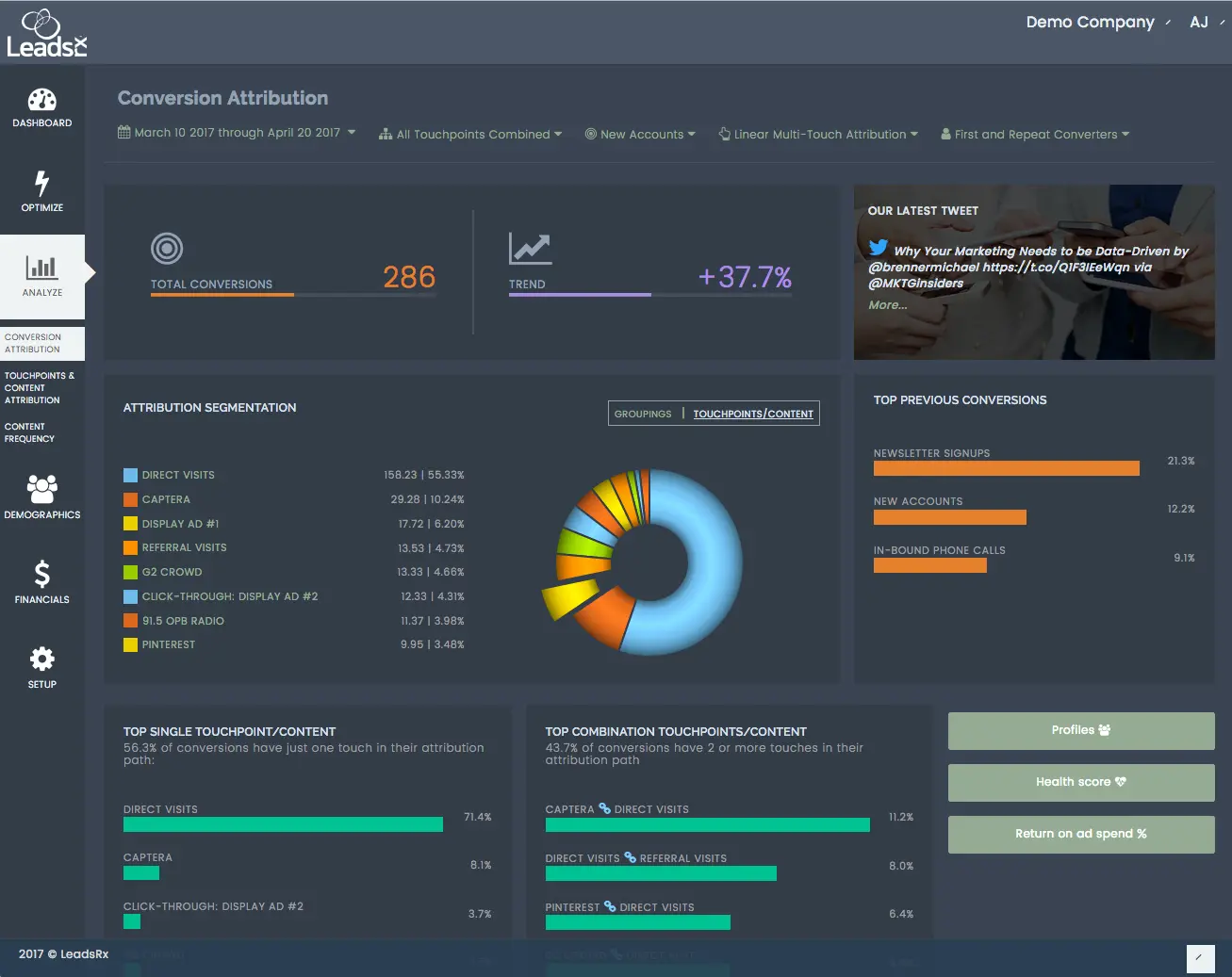
Excellent for mixed media (radio/events/podcasts) plus digital. Clean journey maps and ROAS views.
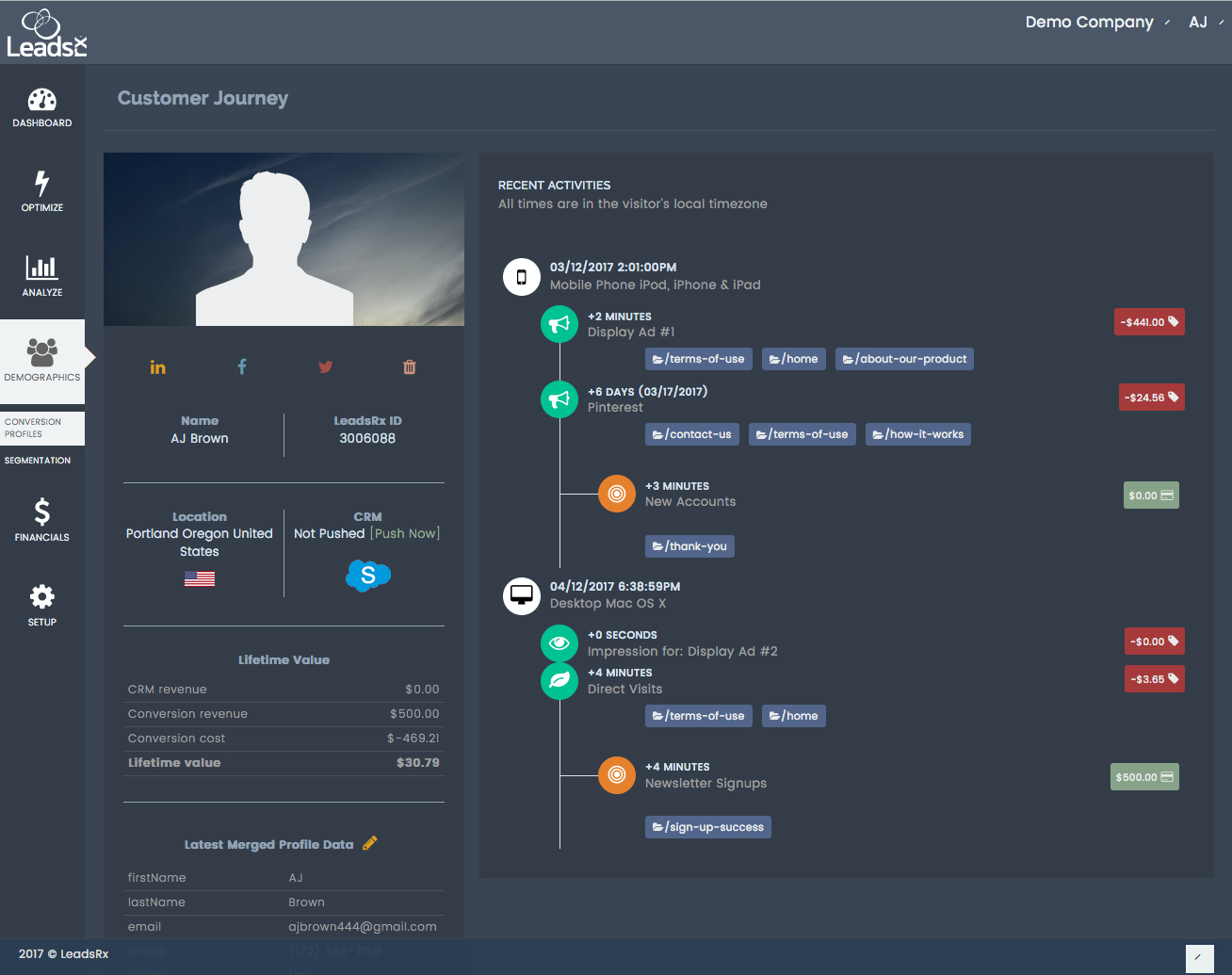

Bottom line: Great omni-channel lens; weak for impression-first LinkedIn ABM pipeline reporting.
LeadsRx pricing
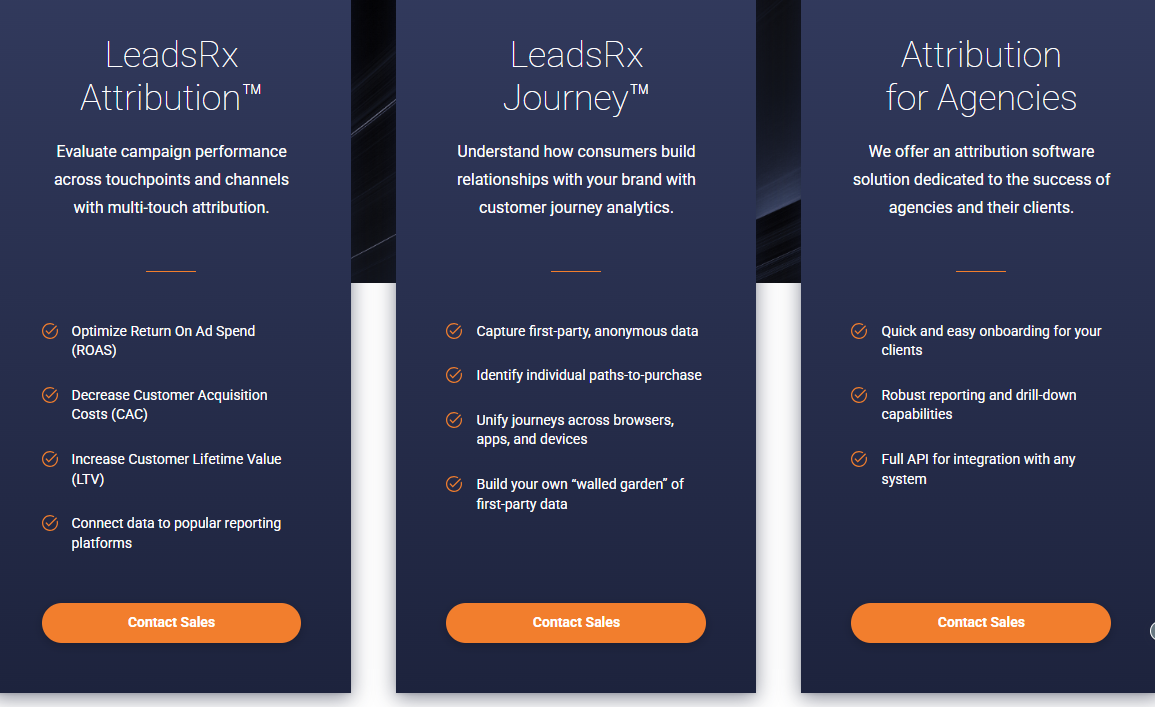
6Sense
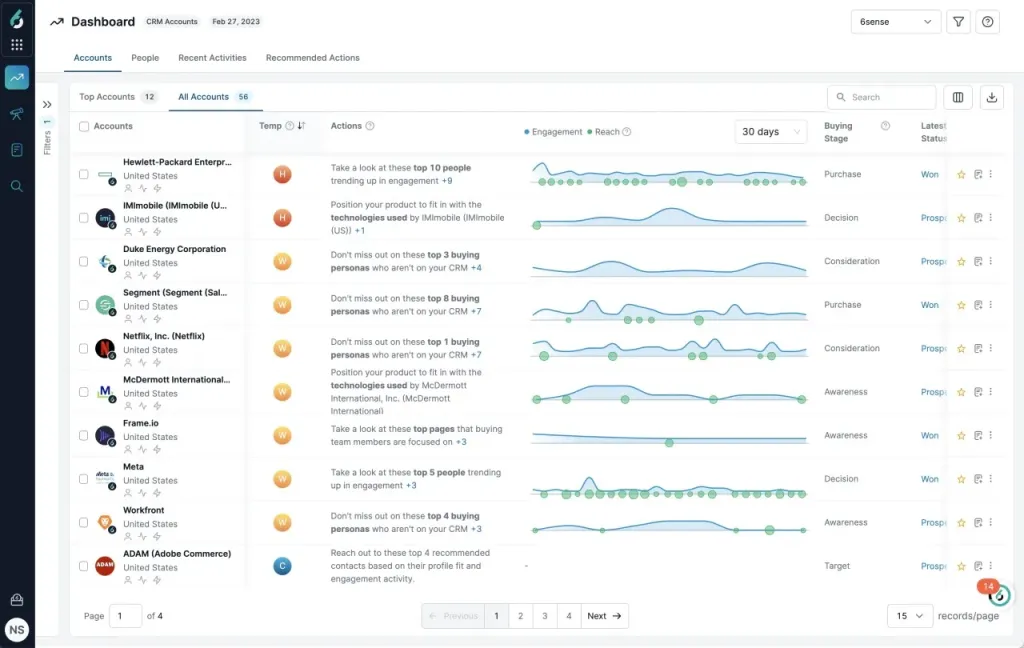
Known for account ID, intent, and predictive scoring; tighter LinkedIn connection since 2023.
Does 6Sense fulfil the prerequisites?
No. LinkedIn remains aggregate; impression-by-account isn’t exposed. Click/visit needed for attribution—under-counts view-through influence on pipeline.
What’s good about 6Sense?
Advanced segments and targeting
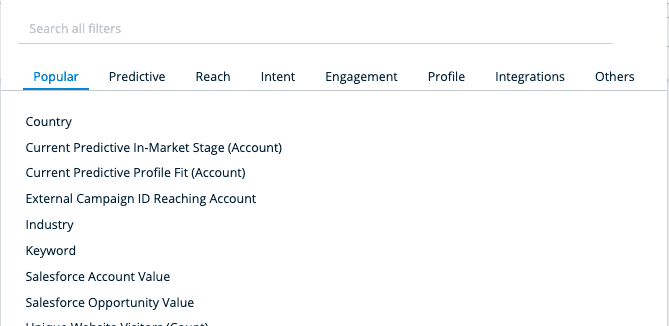
Contextual ads

Persona coverage
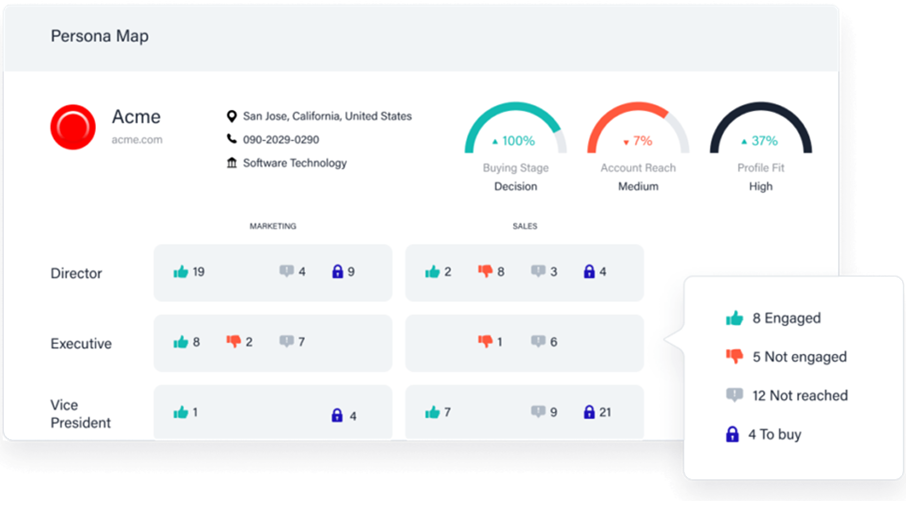
Cons
- Complex onboarding and navigation.
- Total cost can stretch smaller teams.
Bottom line: Great for display + targeting. Not built for impression-led LinkedIn ABM pipeline reporting.
6Sense pricing
Not public. Contact sales.
HubSpot Marketing Attribution
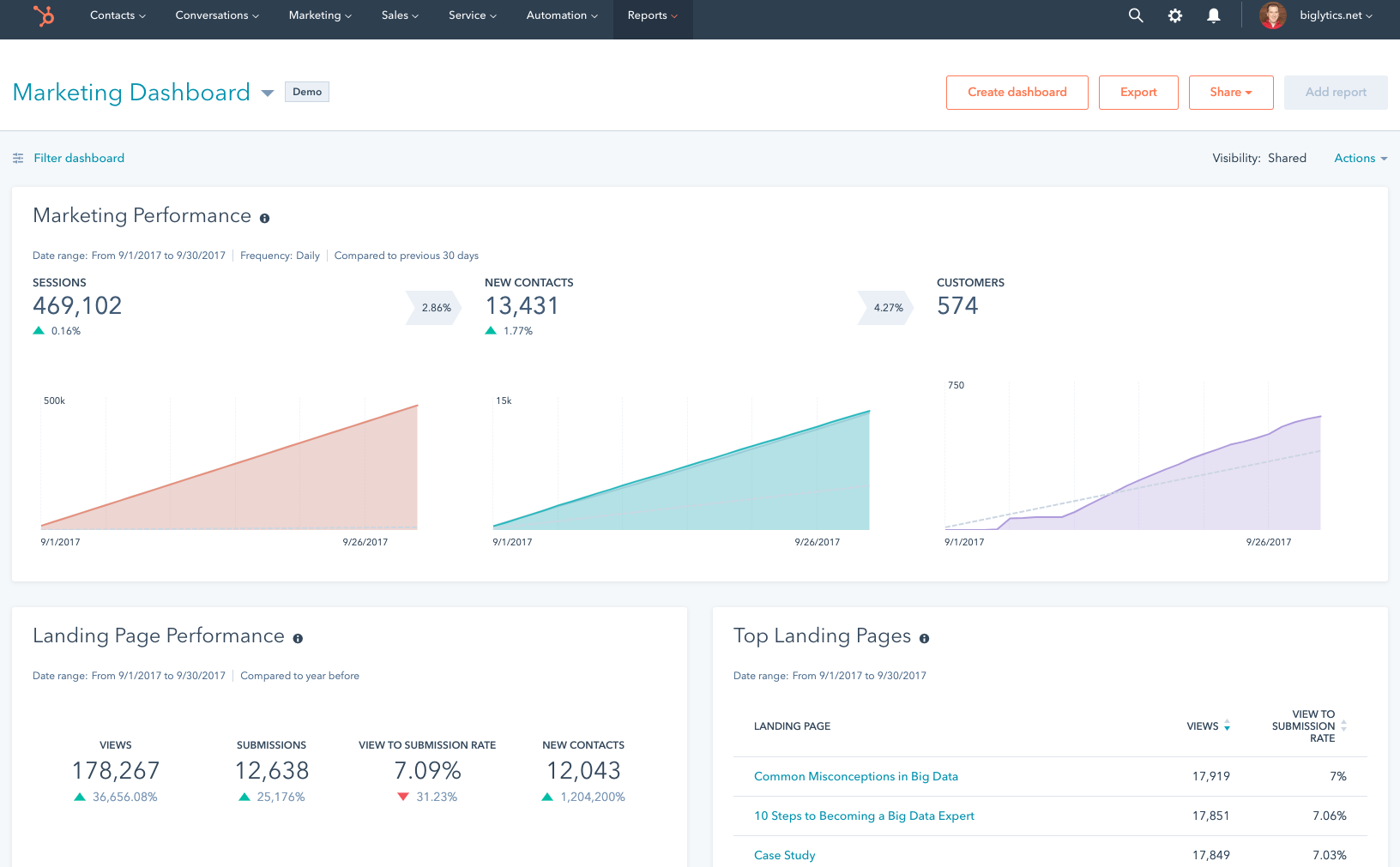
Native ads tool + attribution module. Pulls clicks and lead form data from LinkedIn into reports.
Does it fulfil the prerequisites?
- No impression-level account analytics.
- Contact/deal-centric attribution over company exposure.
- CRM strengths aside, lack of impressions leaves ABM pipeline reporting incomplete.
What’s good about HubSpot Marketing Attribution?
For click-based contact attribution, it’s simple. Connect clicks → contacts → revenue; flip models (First/Last/Linear/U/W/Time-Decay).
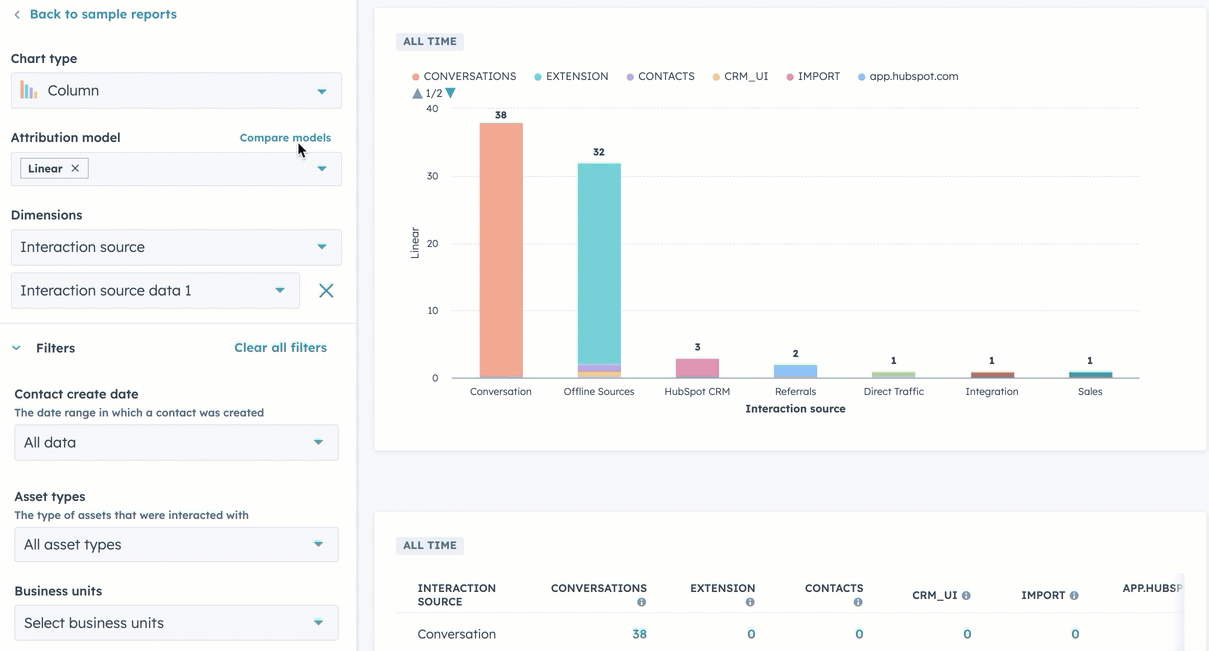
Cons
No custom weights, limited ad types via API; practitioners note constraints (LearnG2 etc.).

Bottom line: Excellent CRM/MAP—just not a LinkedIn ABM pipeline reporter.
HubSpot Marketing Attribution pricing
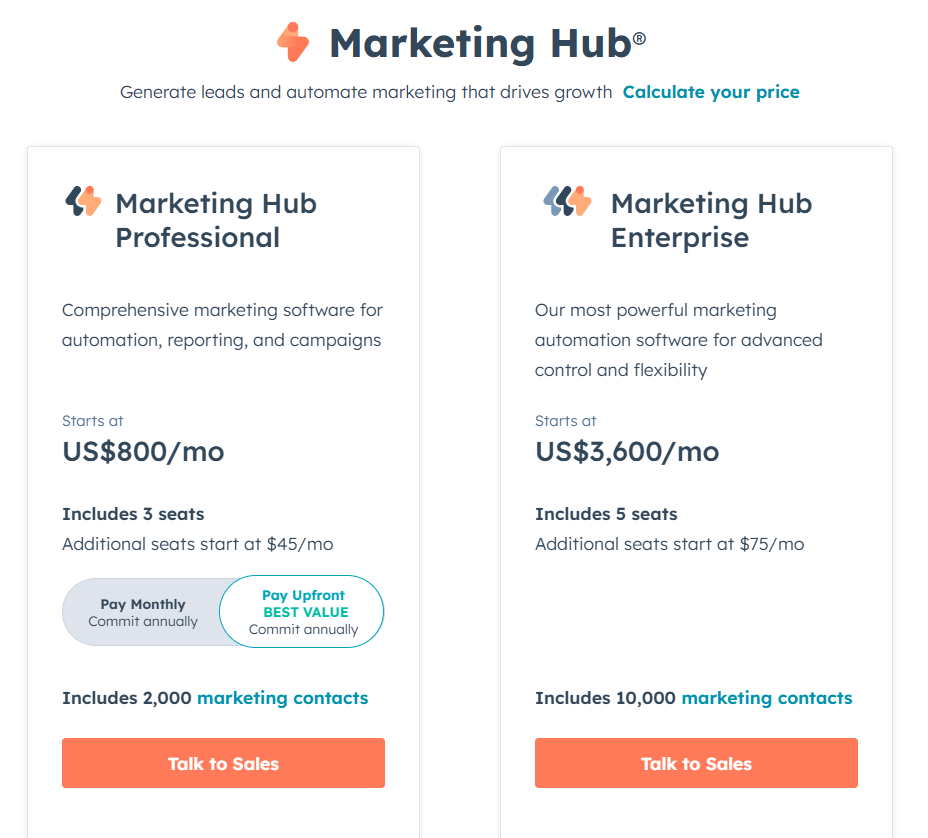
- Marketing Professional from $800/mo: better ad mgmt & custom reports. Not full revenue attribution.
- Marketing Enterprise from $3600/mo: multi-touch revenue attribution.
CommonRoom
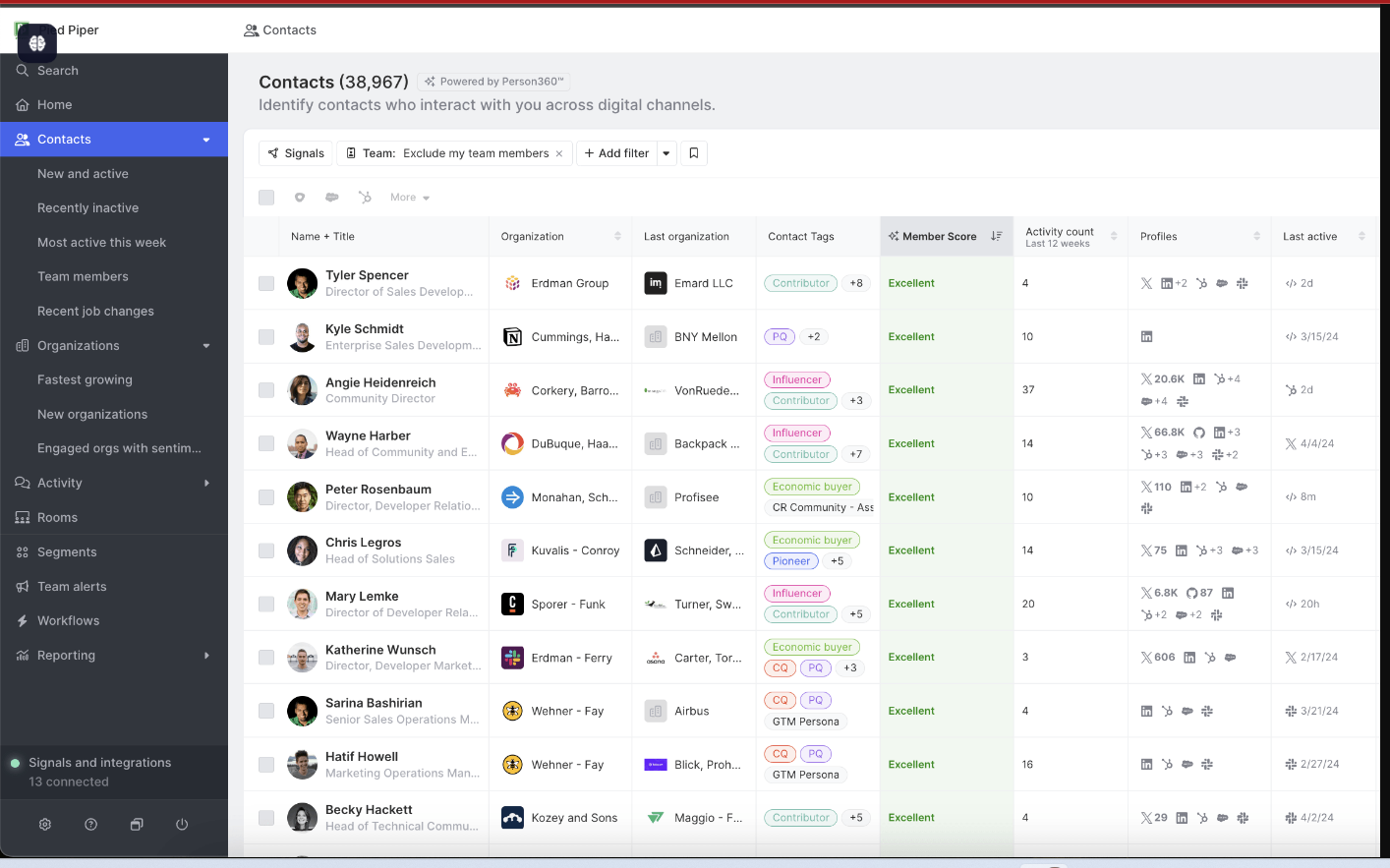
Community intelligence: pulls LinkedIn engagement, Slack, social, and product signals to surface warm accounts.
Does it fulfil the prerequisites?
No. No account-level impression tracking, so ABM pipeline read is incomplete.
What’s good about CommonRoom?
Community tracking + AI

Correlate community spikes with LinkedIn pushes; let RoomieAI surface patterns.
Firmographic enrichment
Turn raw signups into company profiles that map back to accounts.
LinkedIn Chrome extension
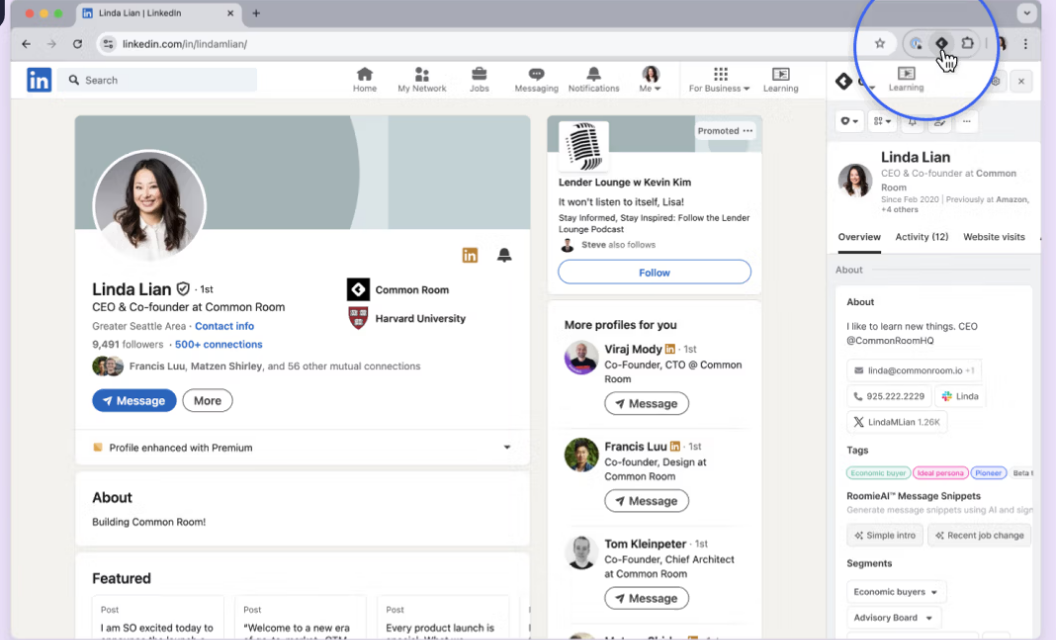
Cons
- Seat tiers can feel rigid (G2).
- Users want steadier AI and more features.
Bottom line: Terrific for community-led growth. Not a substitute for impression-level ABM pipeline reporting.
CommonRoom pricing

Starter from $999/mo (35k contacts, 2 seats). Team from $1,999/mo (100k contacts, 3 seats). Enterprise: custom.
Windsor.ai
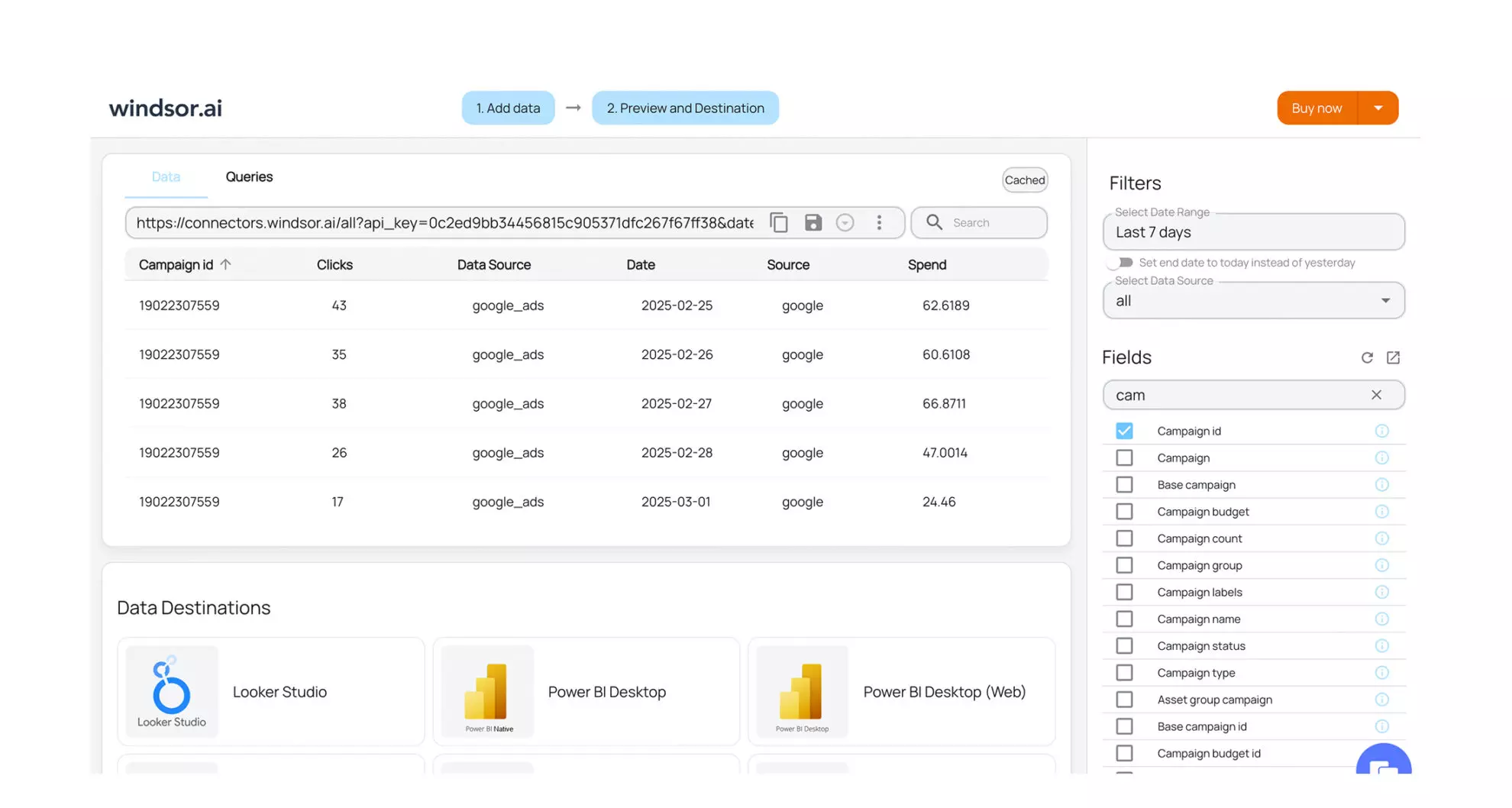
Data hub for attribution across 300+ sources; great normalisation and BI exports.
Does it fulfil the prerequisites?
No. Needs clicks/lead forms for LinkedIn credit and leans on reverse IP for grouping. No impression-by-account analytics; manual grouping for ABM.
What’s good about Windsor.ai then?
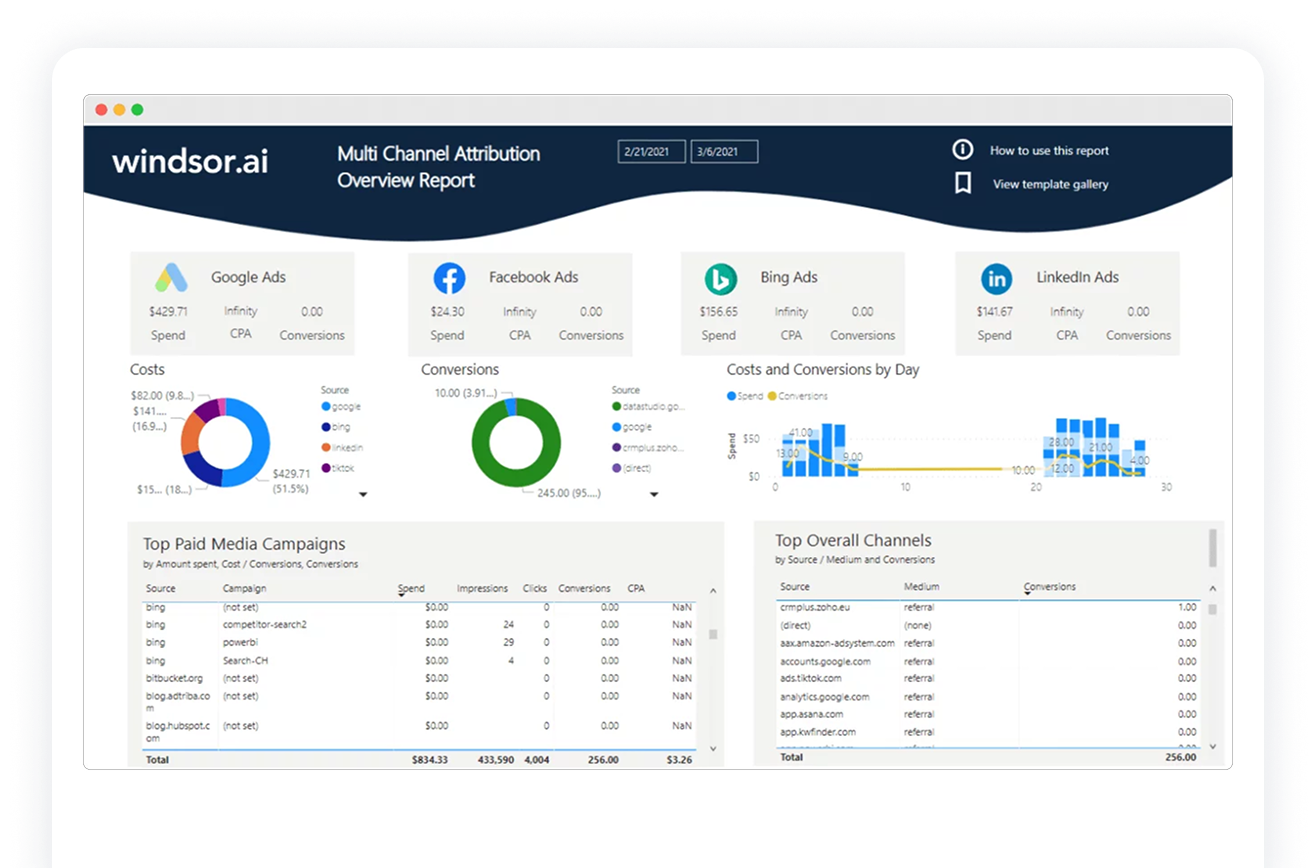
- Multiple models, including algorithmic, with tunable weights.
- Exports for Python/R workflows.
Bottom line: Excellent model layer; not an ABM-first LinkedIn pipeline reporter.
Windsor.ai pricing
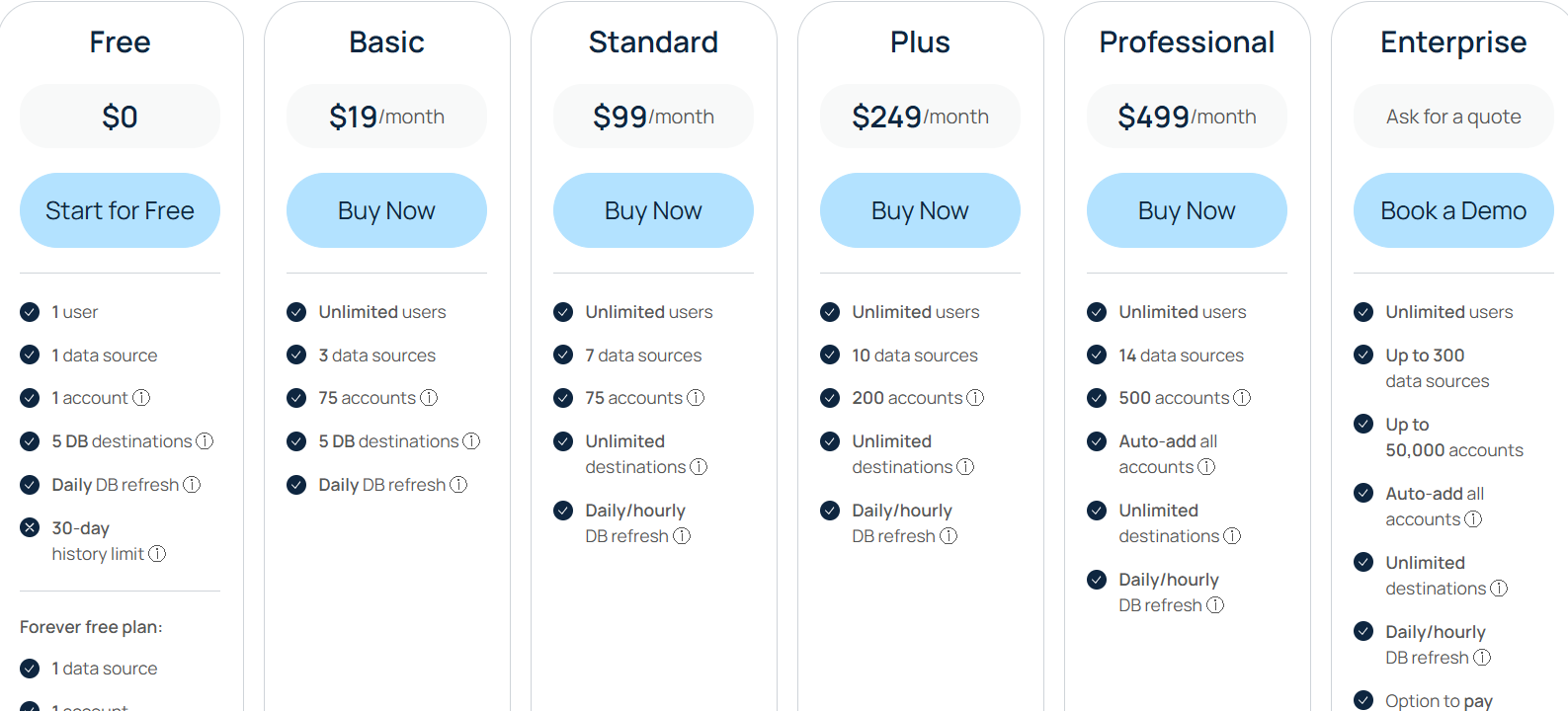
Free (1 source/30-day history). Basic $19, Standard $99, Plus $249, Professional $499, Enterprise custom.
Over to you
Demandbase, HockeyStack, Terminus, and Factors.ai are strong when you’re running larger programs with multi-channel scope and deep controls. LeadsRx doesn’t use the LinkedIn API and leans on cookies. HubSpot Attribution remains click/contact-centric. 6Sense focuses on targeting and visits over impression-level reporting. CommonRoom surfaces community engagement, not impression logs. Windsor.ai is a stellar data layer, not an ABM-first choice.
If you want a cost-conscious tool that still nails ABM pipeline reporting for LinkedIn, start with ZenABM. It tracks company-level impressions, maps them to CRM opportunities, writes properties into HubSpot, and shows which campaigns moved which deals. even when nobody clicked. Book a ZenABM demo to see how the best ABM pipeline reporting tools for LinkedIn campaigns should operate in practice.

